It's not in any guide book, but La Paloma is one of Madrid's most anticipated and authentic annual street parties. Coinciding with the Feast of the Assumption, a Spanish national holiday, the neighborhood is transformed into a festive setting where religious devotion and popular joy coexist.
Every year around August 15th, the streets of La Latina, one of Madrid’s oldest and most charming neighborhoods, explode with color, music, and tradition. It’s the Fiestas de la Virgen de la Paloma, a three day festival where sacred devotion collides with all-night street partying, and the city comes alive in full castizo (authentically Madrid) style.
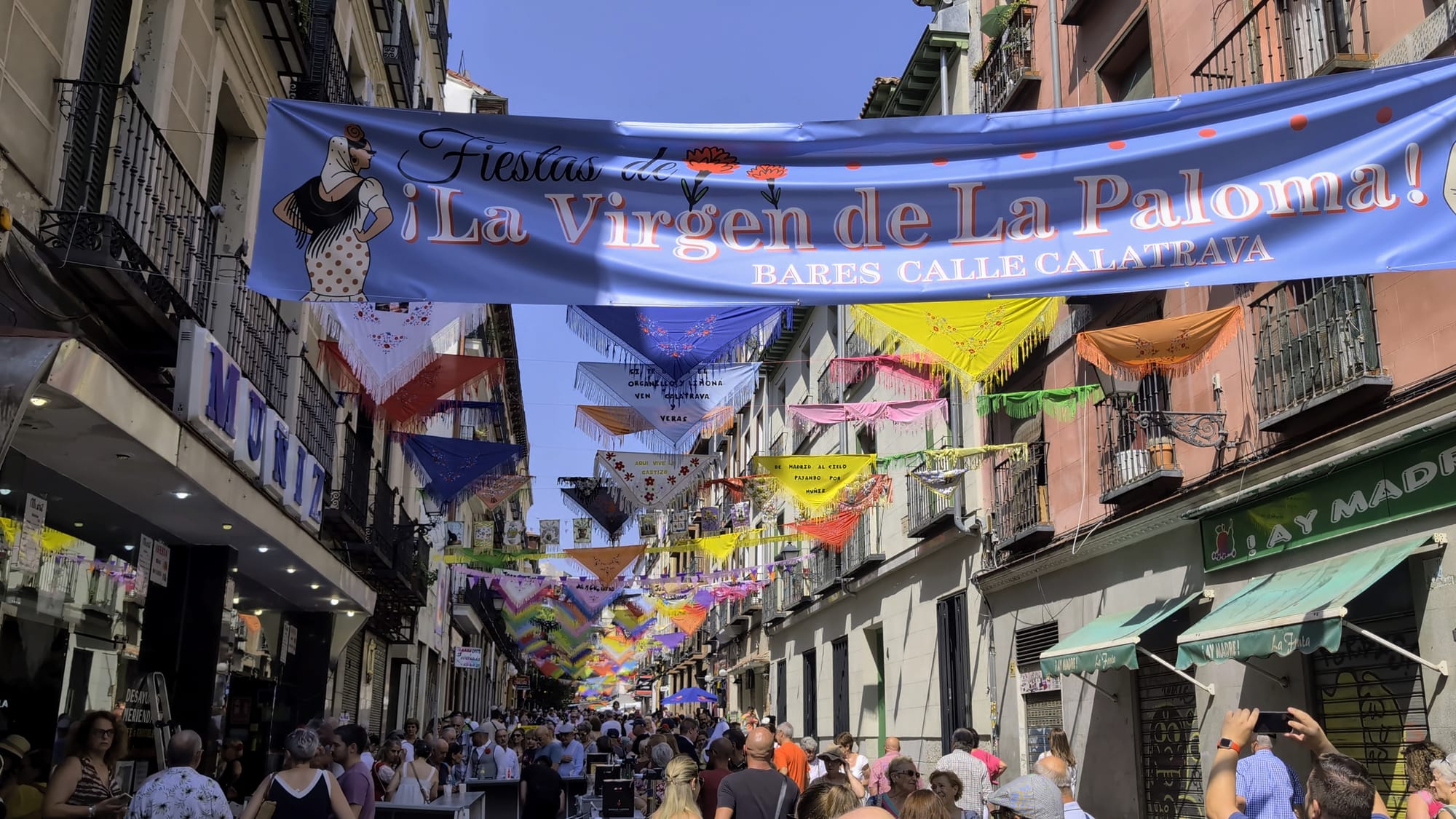
La Virgen de La Paloma festival takes over the entire La Latina neighborhood of Madrid every August 15th.
And it all started with a discarded painting.
The Story of Isabel Tintero and La Virgen de la Paloma
In 1787, a group of neighborhood children discovered a discarded painting of the Virgin Mary among firewood piled on a vacant lot. It wasn’t anything remarkable, just a humble copy of a Marian image, the kind of portrait of Mary meant for personal devotion rather than to be admired as a work of art.
A young woman named Isabel Tintero, not believing that the painting should be used as a toy, bought the paining from the children for a few coins and hung it reverently by her door on Calle de la Paloma.
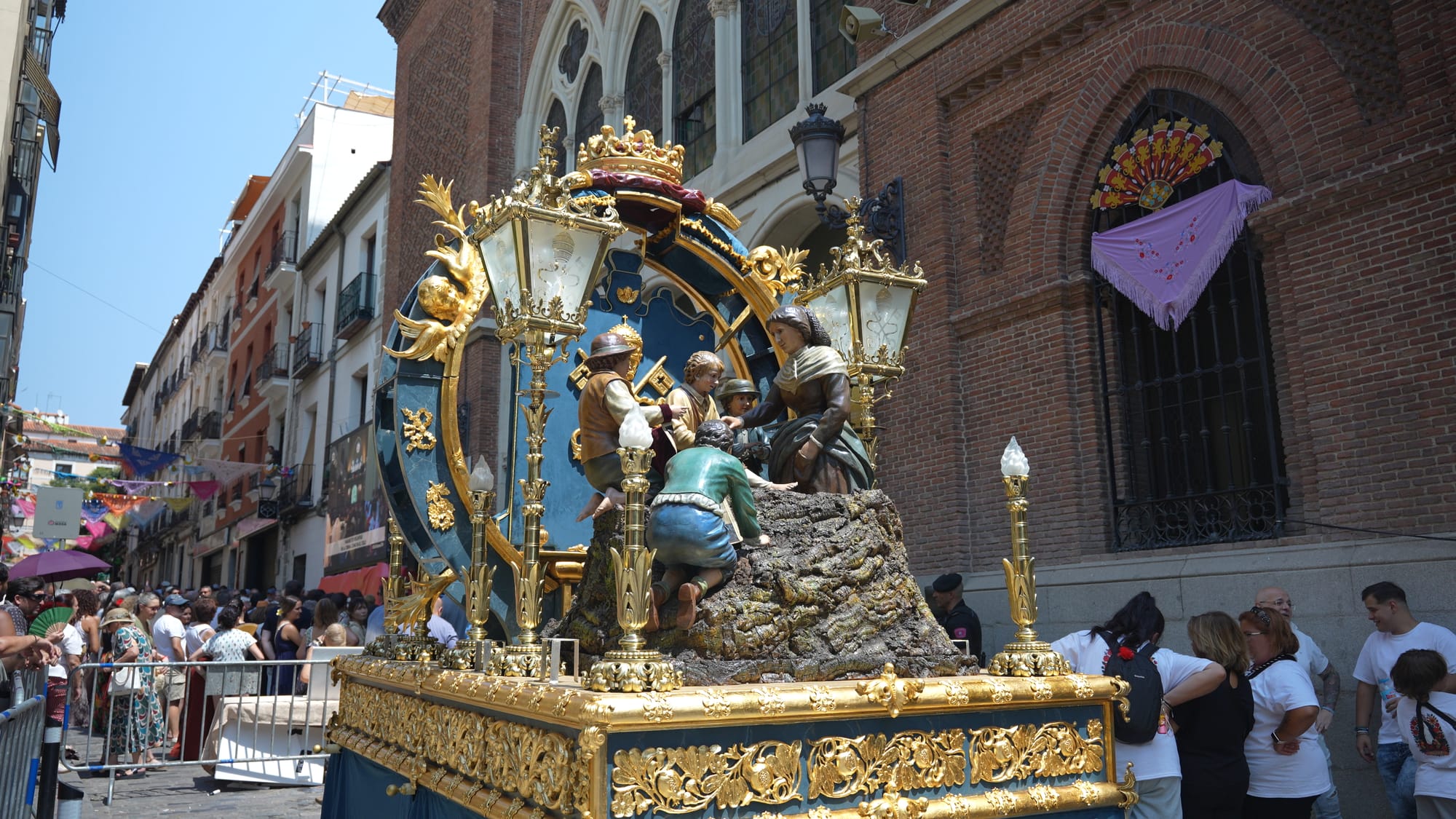
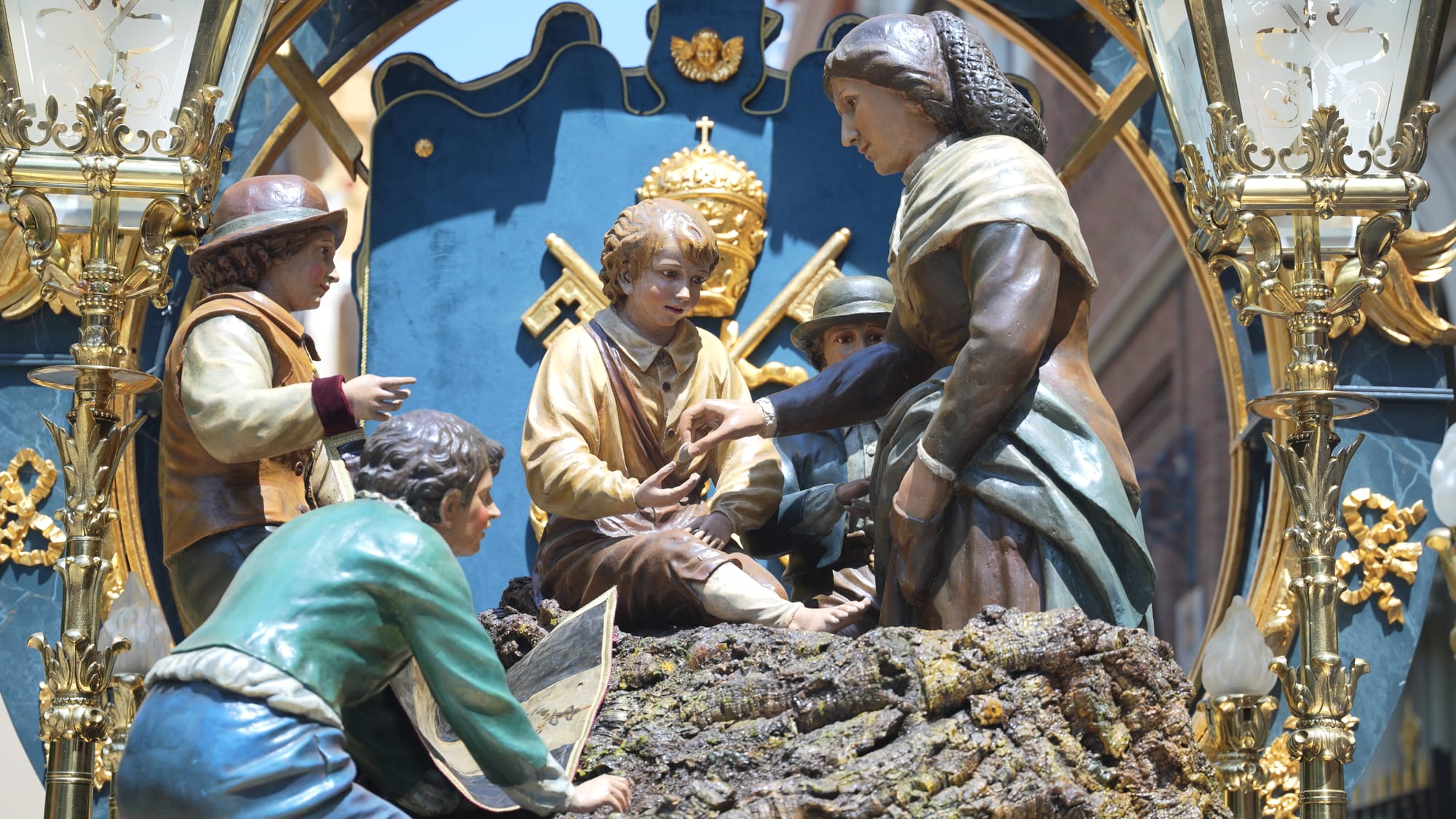
The float depicting Isabel Tintero purchasing the discarded painting from neighborhood children.
In 18th-century Madrid, small street shrines like this were everywhere. People would pray at them on their way to market, light a candle before an important exam, or ask for protection before a long journey.
At first, neighbors just stopped to admire the painting. But soon candles and flowers began to appear. People whispered about favors granted, illnesses eased, and problems solved. Word spread: this painting was special.
Legend says that Queen María Luisa de Parma, wife of King Charles IV, brought her ailing son, the future Fernando VII, to the image, hoping for a miracle. She reportedly became one of the Virgin's most fervent devotees. Whether or not it happened, this story greatly enhanced the painting’s fame.
By 1791, devotion had grown so strong that Isabel petitioned the powerful Council of Castile for permission to build a small chapel on her street to house the painting. When the council agreed, the Virgin ceased being just a private treasure, she became the spiritual heart of the barrio. Locals began calling her “La Virgen de la Paloma,” (Our Lady of the Dove) named after the street, Calle de la Paloma, the “Street of the Dove.”
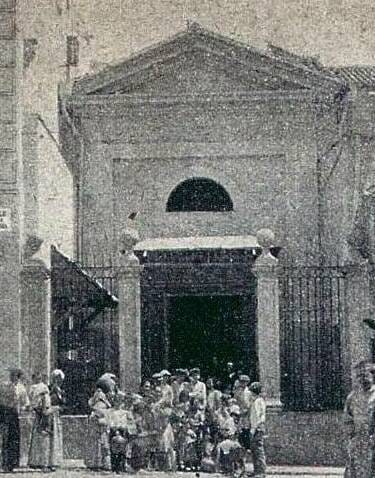
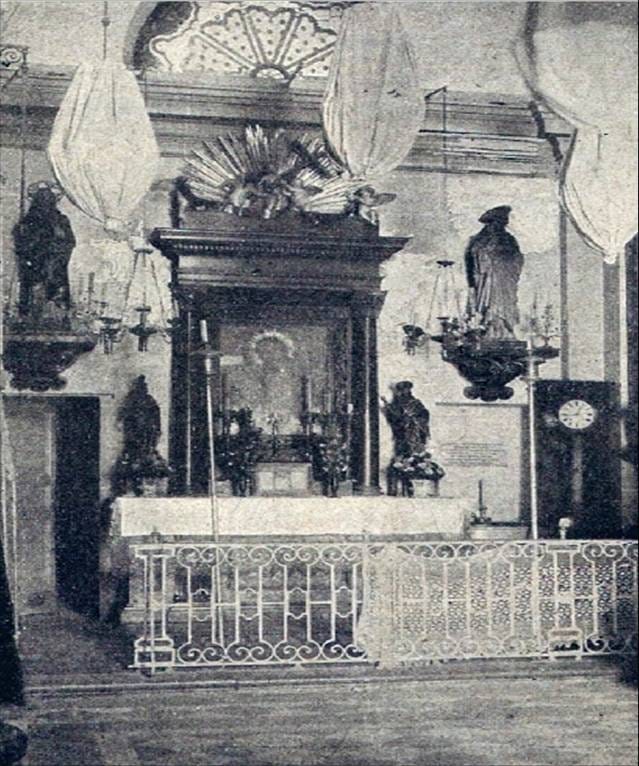
The original chapel built to house the La Virgen de la Paloma painting.
Over the decades, devotees continued to poured in, eventually leading to the construction of the current church, completed in 1912, on the site of Isabel Tintero’s home. The same painting still hangs above the altar today.
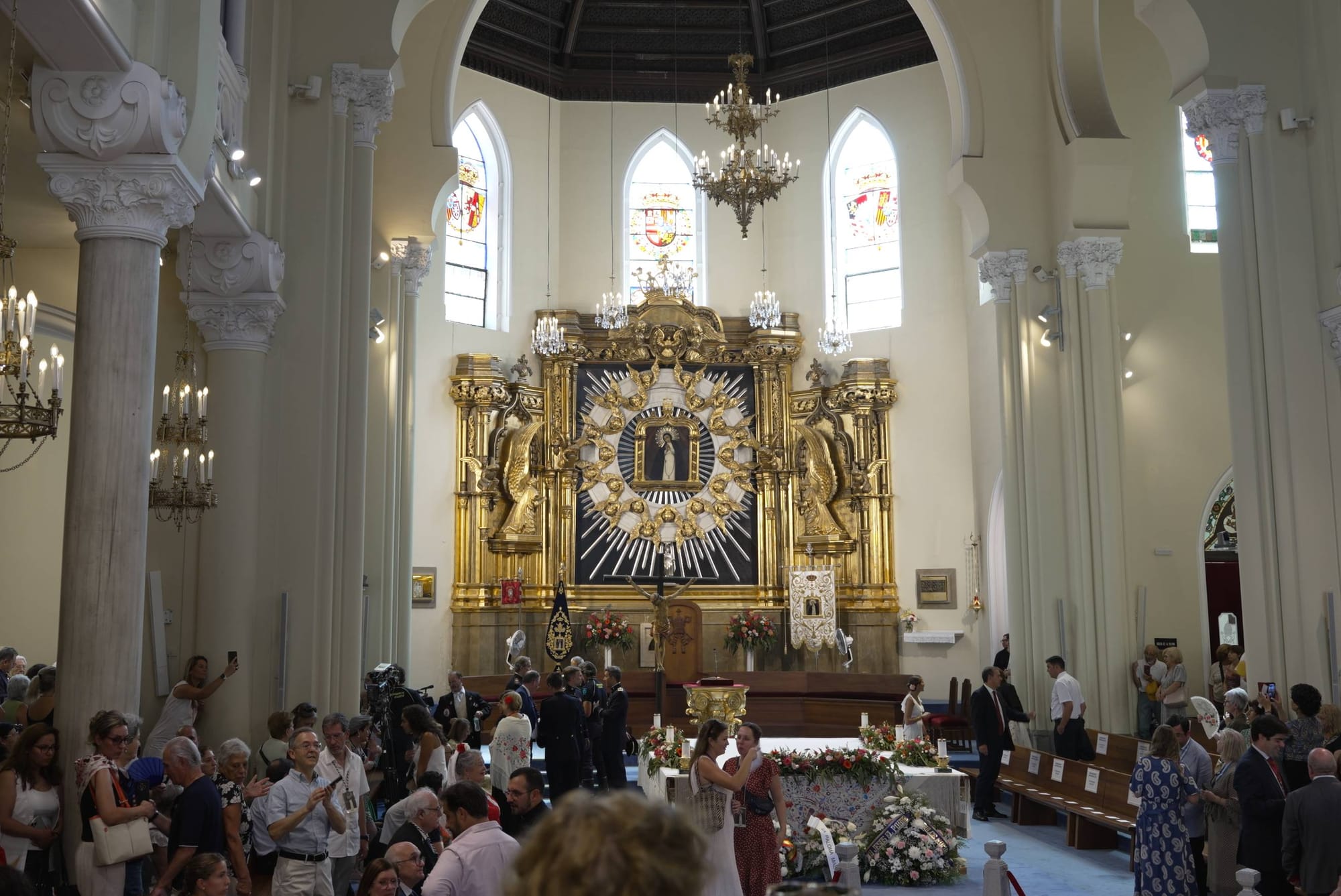
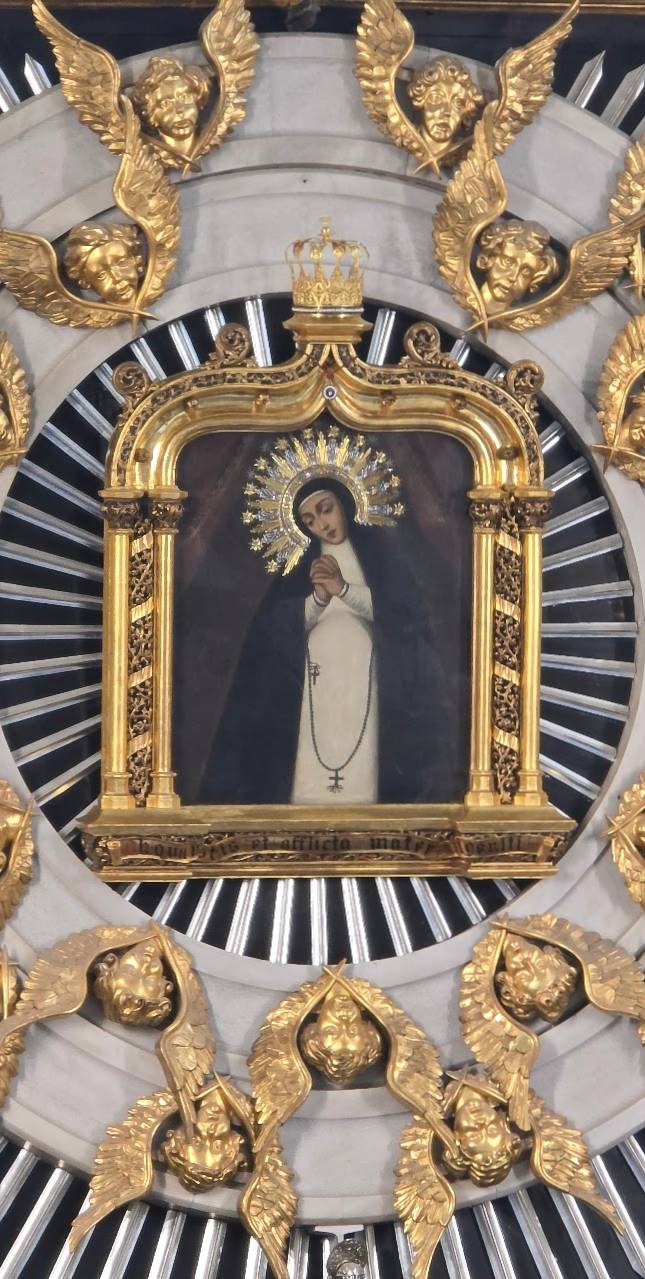
La Virgen de la Paloma hangs above the alter of the church built on the site of Isabel Tintero’s home.
The Patron of Firefighters
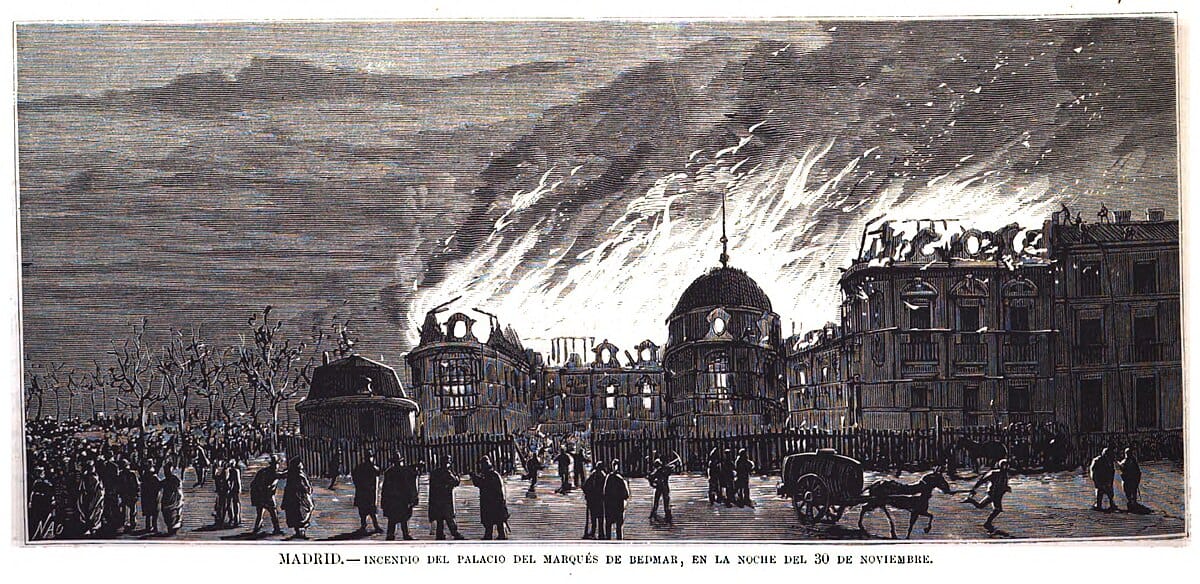
In the 19th century, Madrid suffered several major fires, yet locals noticed something remarkable: homes displaying the Virgin of La Paloma often seemed to escape serious damage. Coincidence? Not to locals.
The Madrid fire brigade adopted her as their patroness, and to this day, on August 15, firefighters turn out in full uniform.
Their first ritual: scale the towering altarpiece and lower the painting, an act called el descenso, so the faithful can see it up close and offer flowers. This firefighter tradition began in 1923, but the tradition of the painting's annual procession began much earlier, some time in the second half of the 19th century.
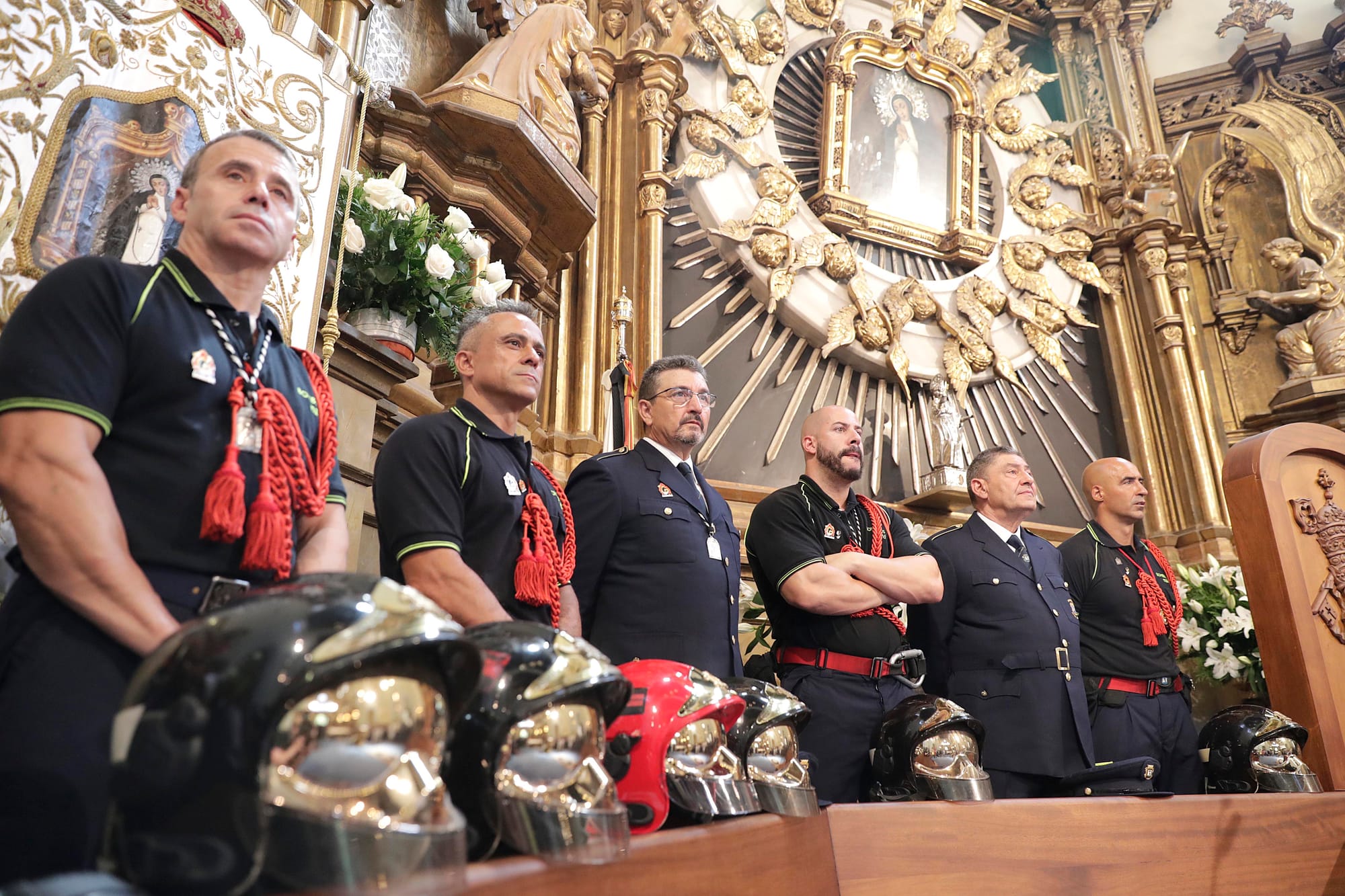
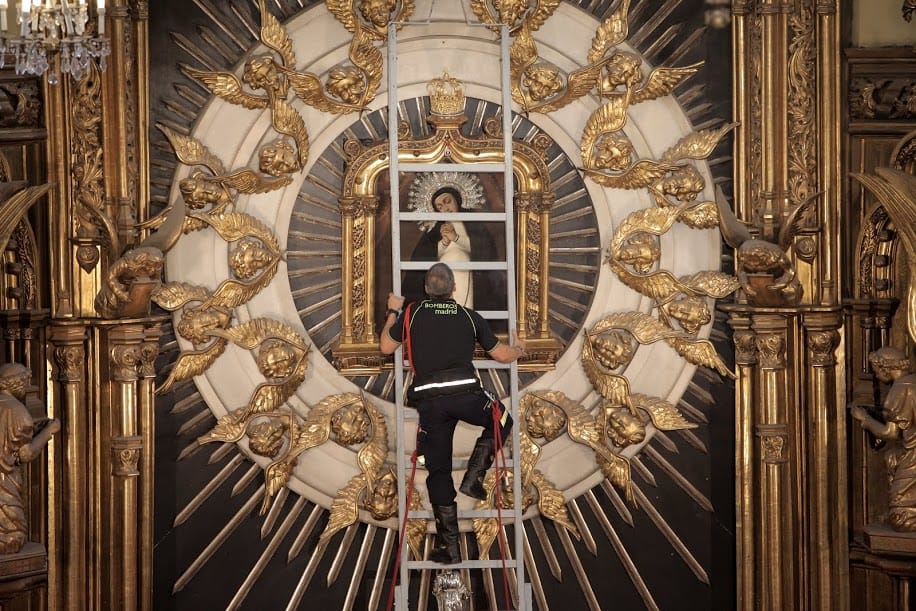
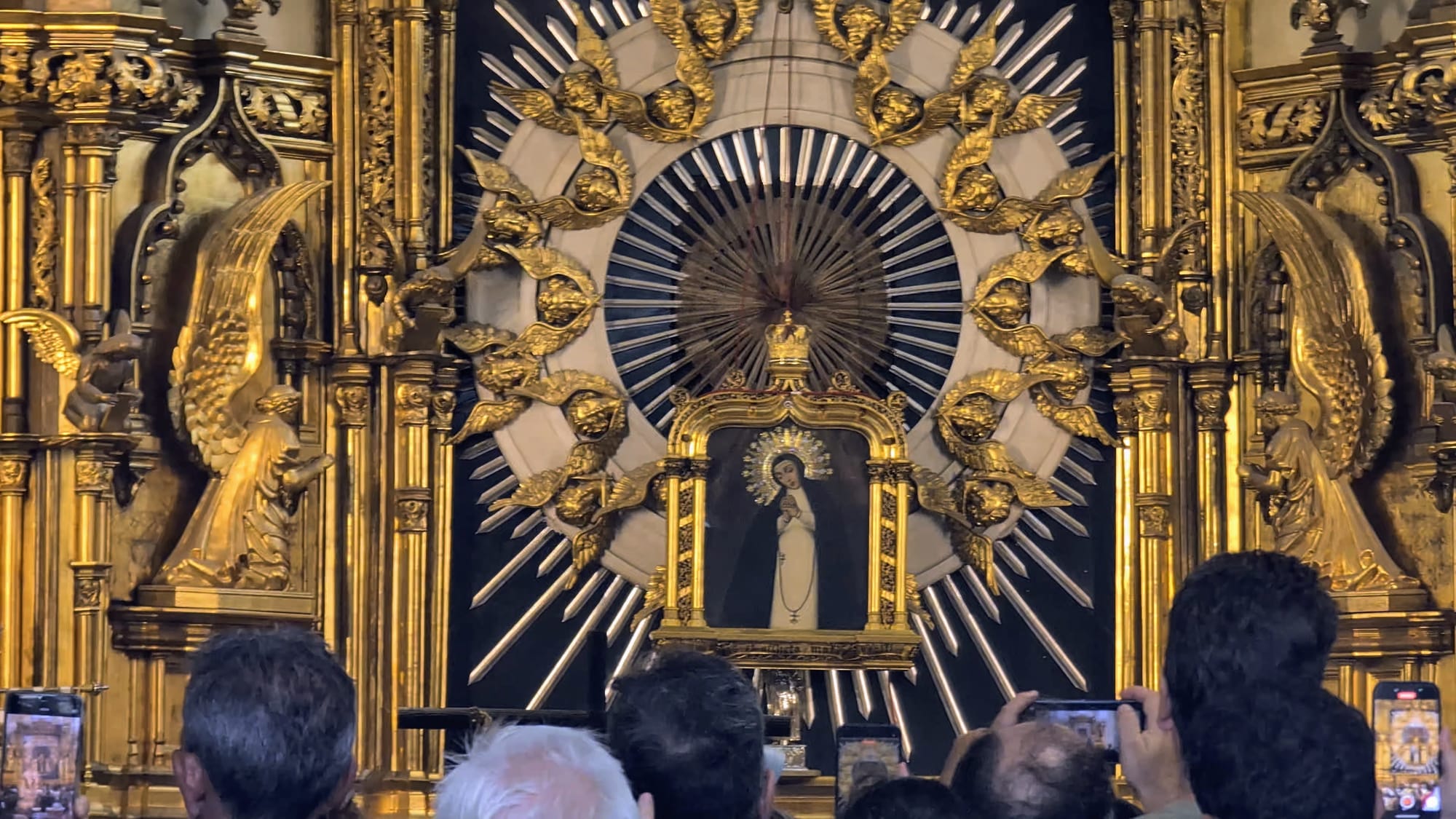
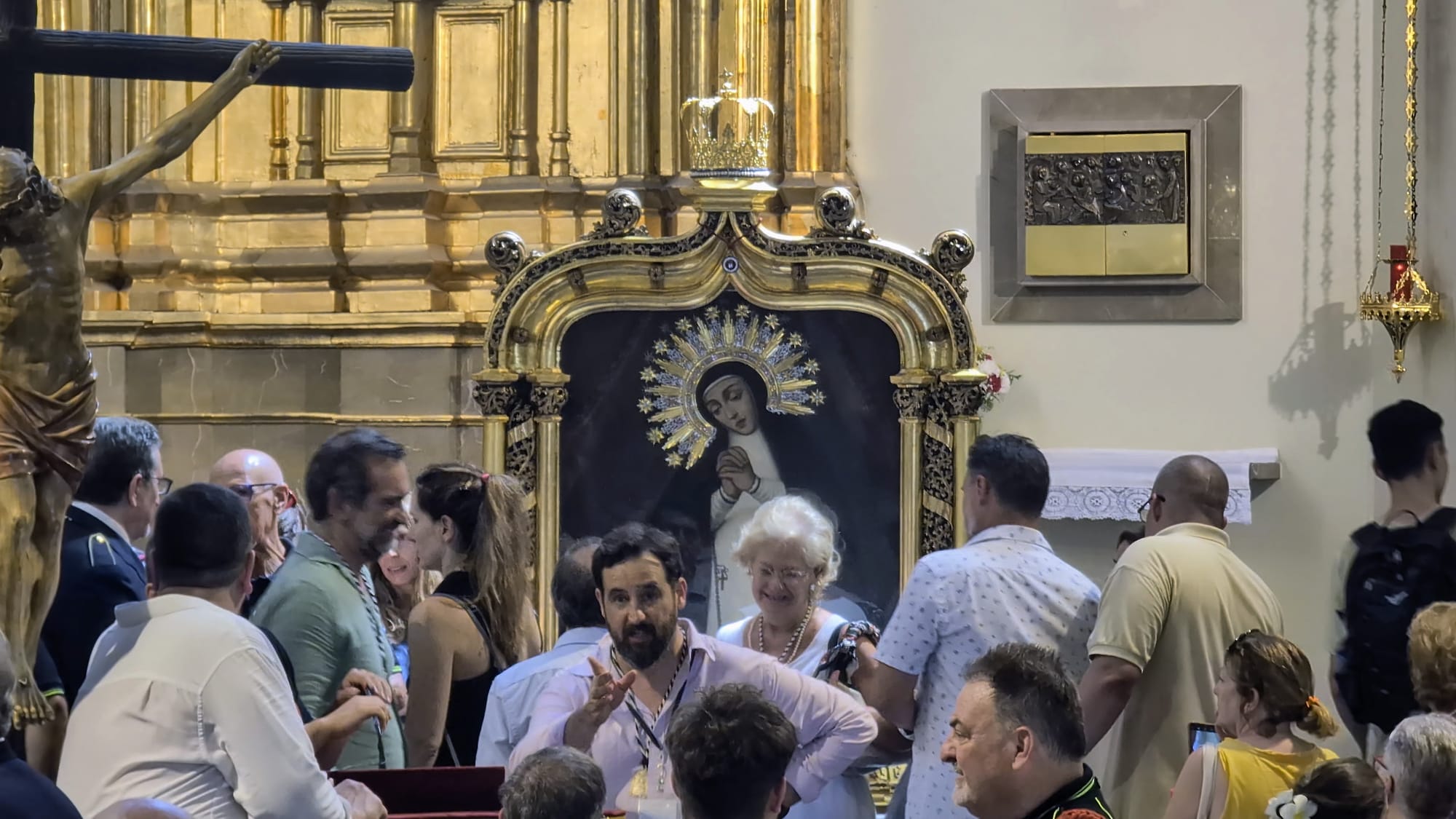
Fire fighters lower the painting from the alter so people can visit it up close.
The evening procession of La Virgen de la Paloma is the festival’s heartbeat. The painting is carried through the neighborhood accompanied by a marching band, clergy, and firefighters. It begins in front of the church at the Plaza de la Paloma.
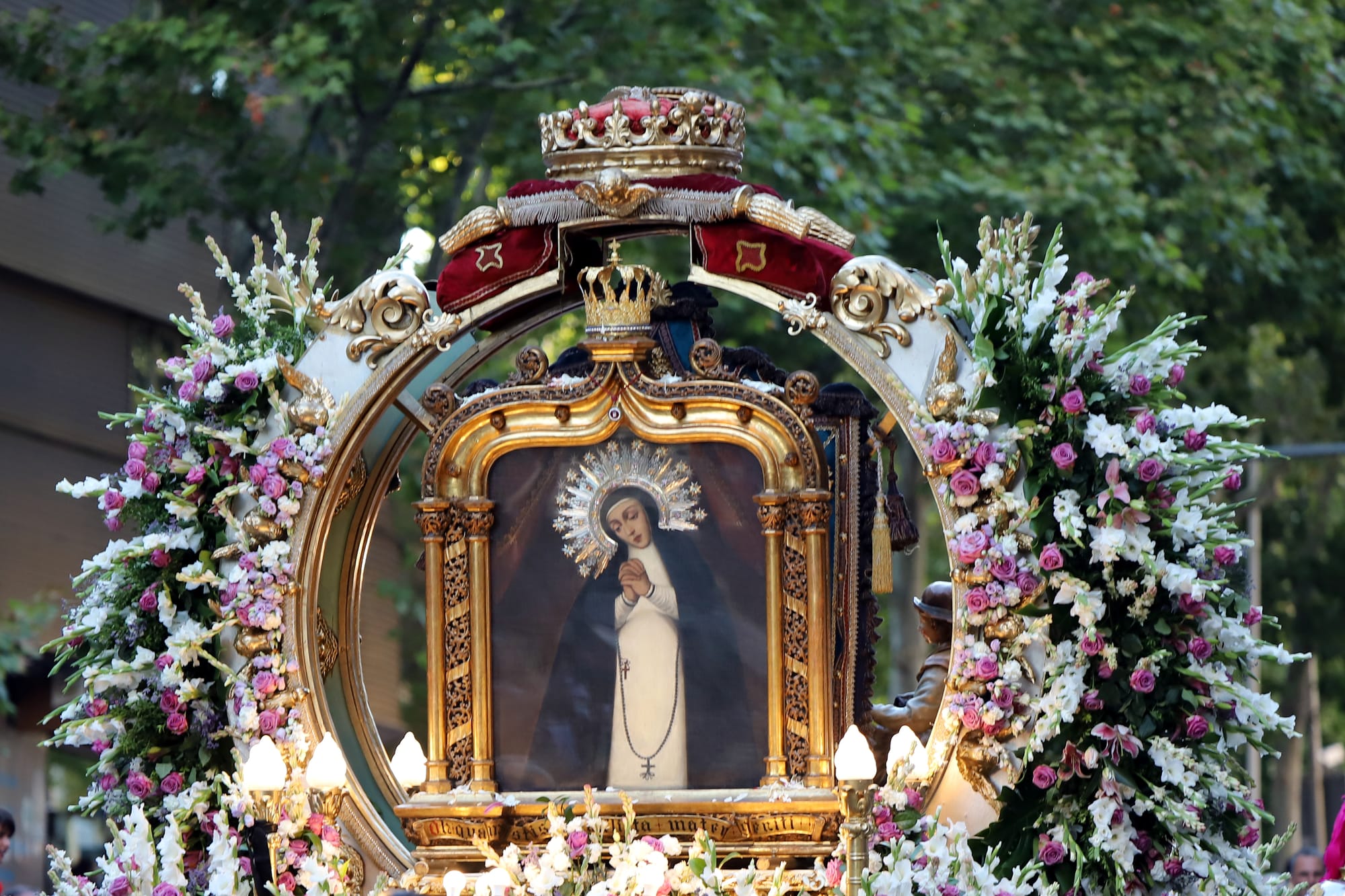
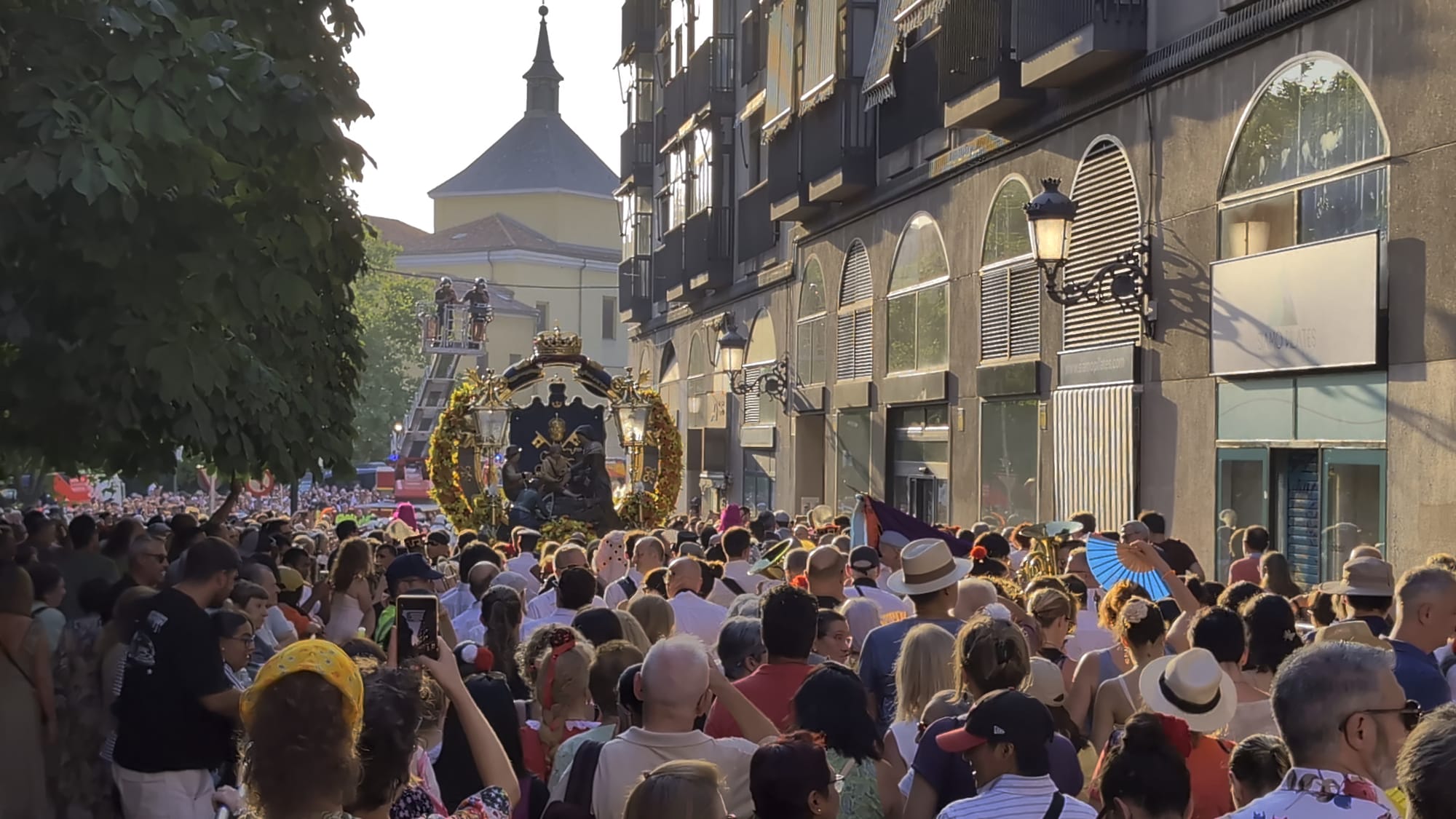
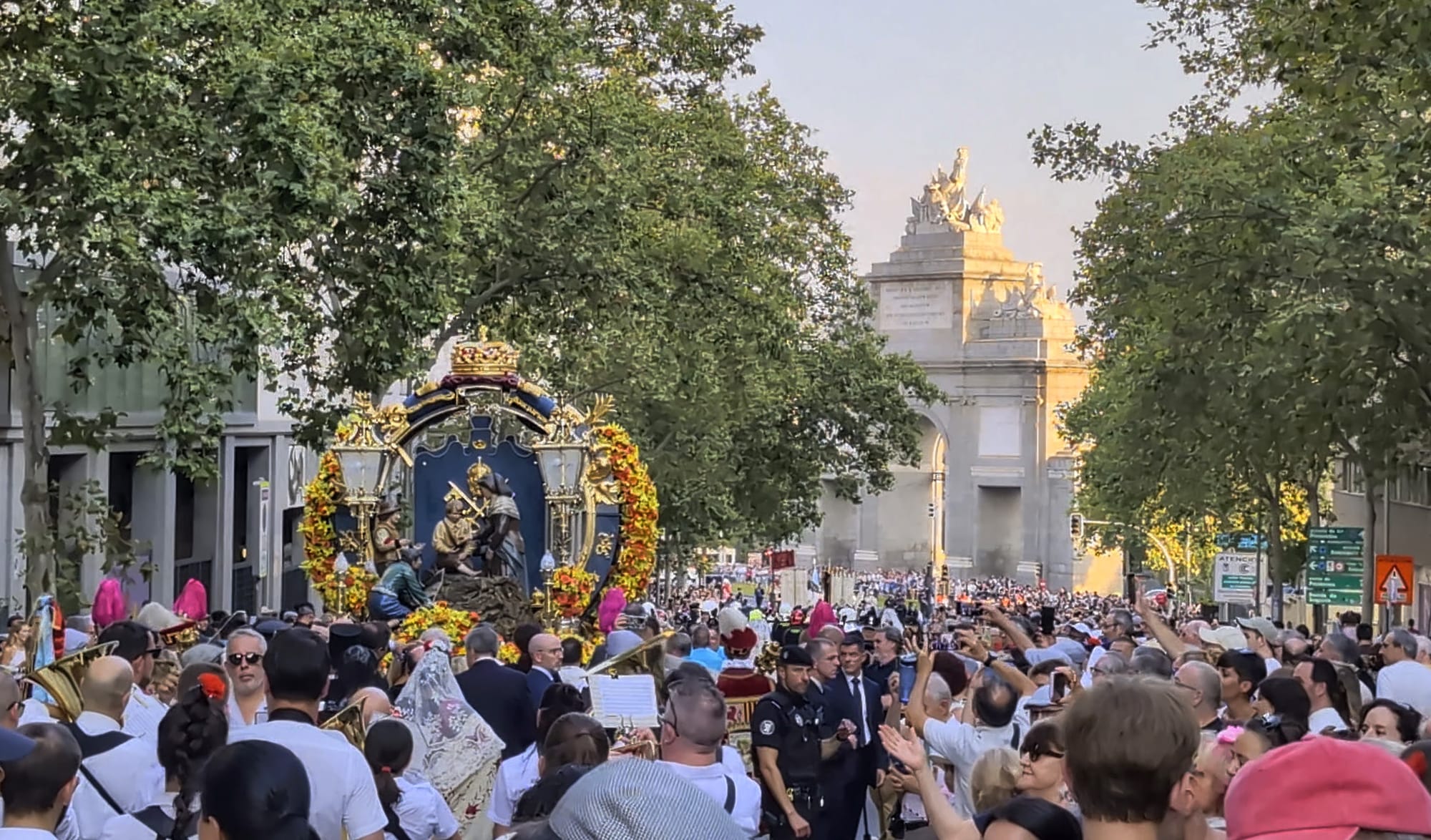
The painting is first taken from the church to the Puerta de Toledo for a firefighter tribute.
They first stop by Puerta de Toledo for a spectacular tribute. There, firefighters perform acrobatics while suspended above the crowds as foam representing doves is released into the sky creating one of the festival’s most dramatic moments.
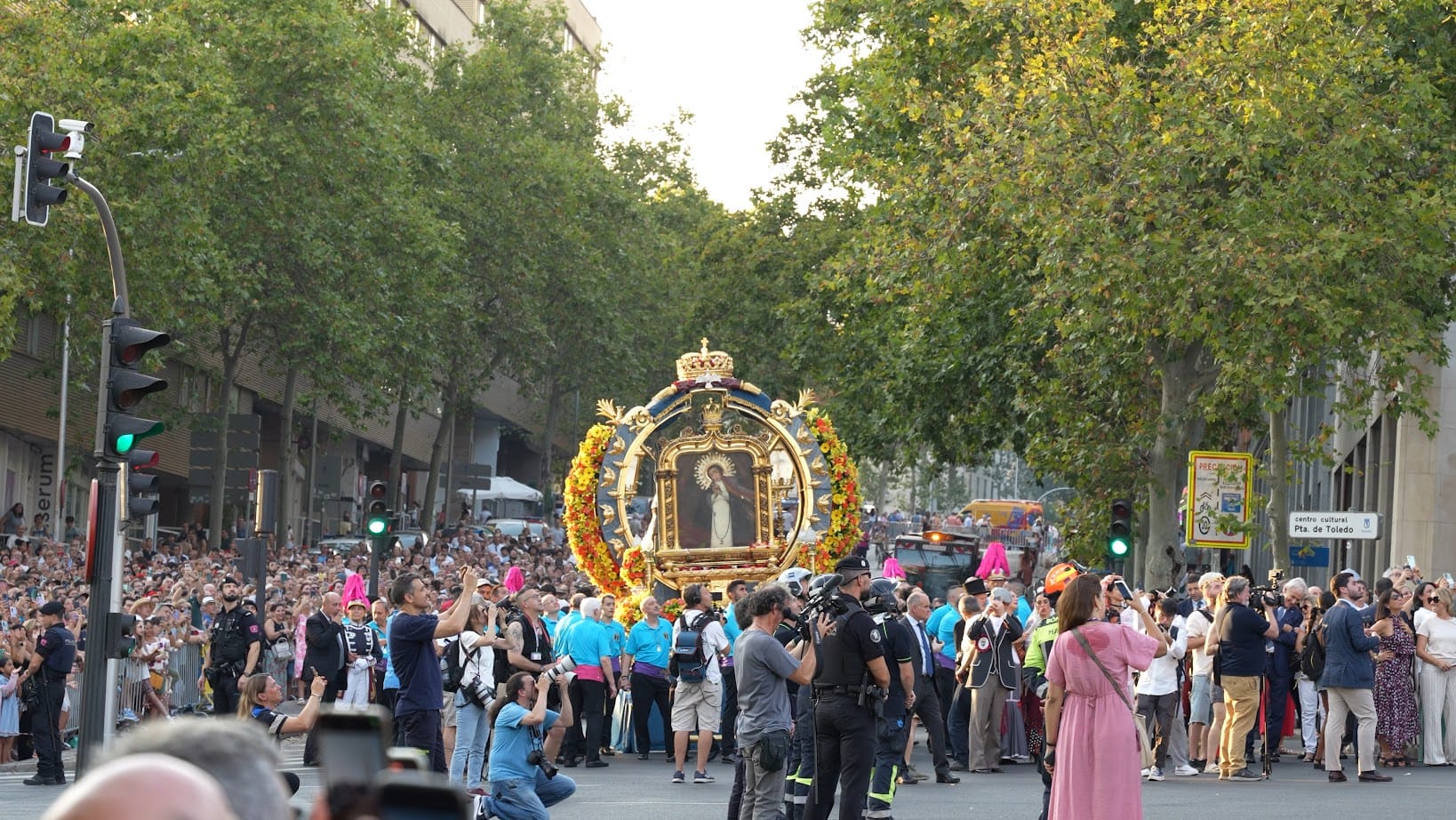
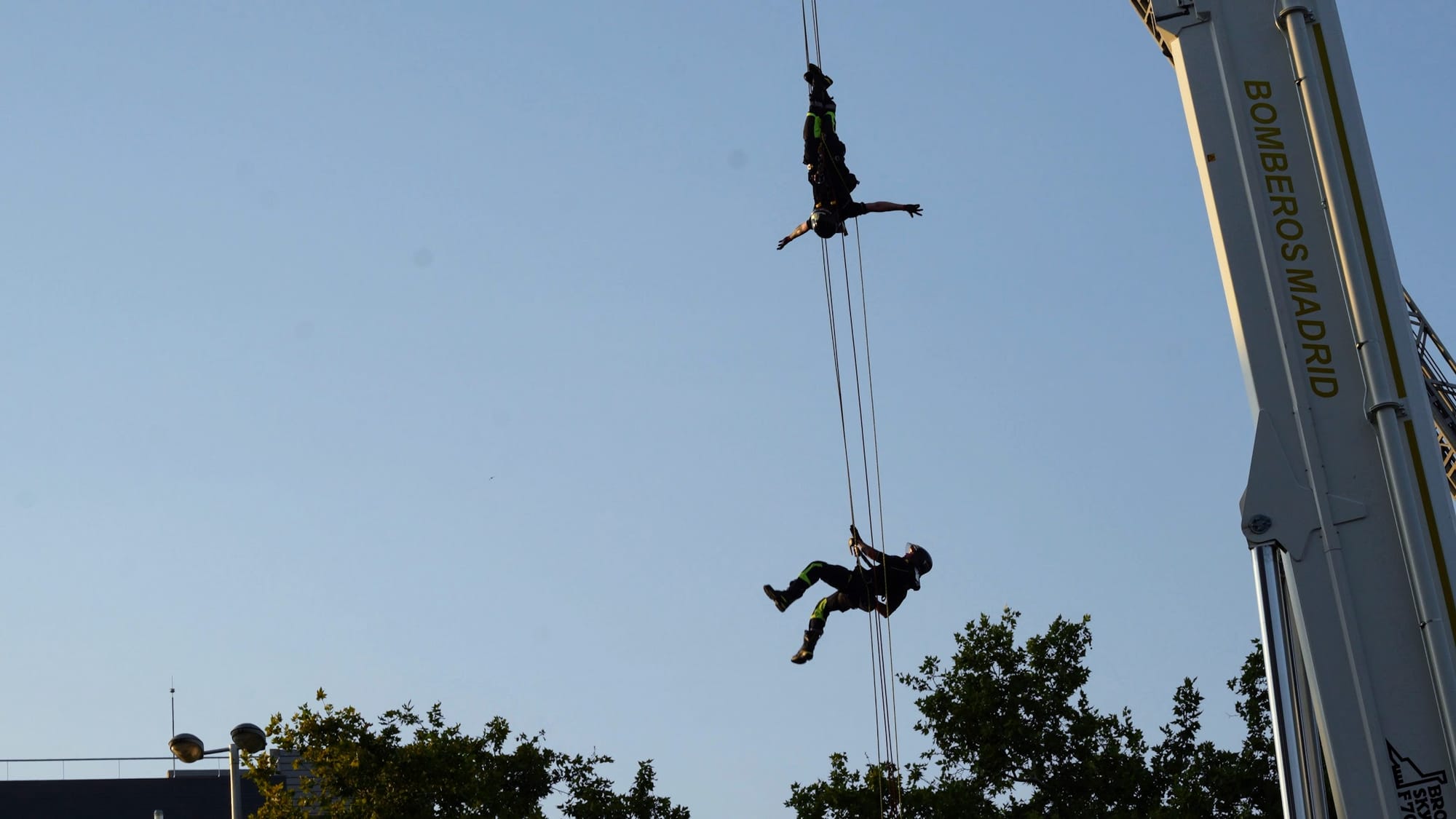
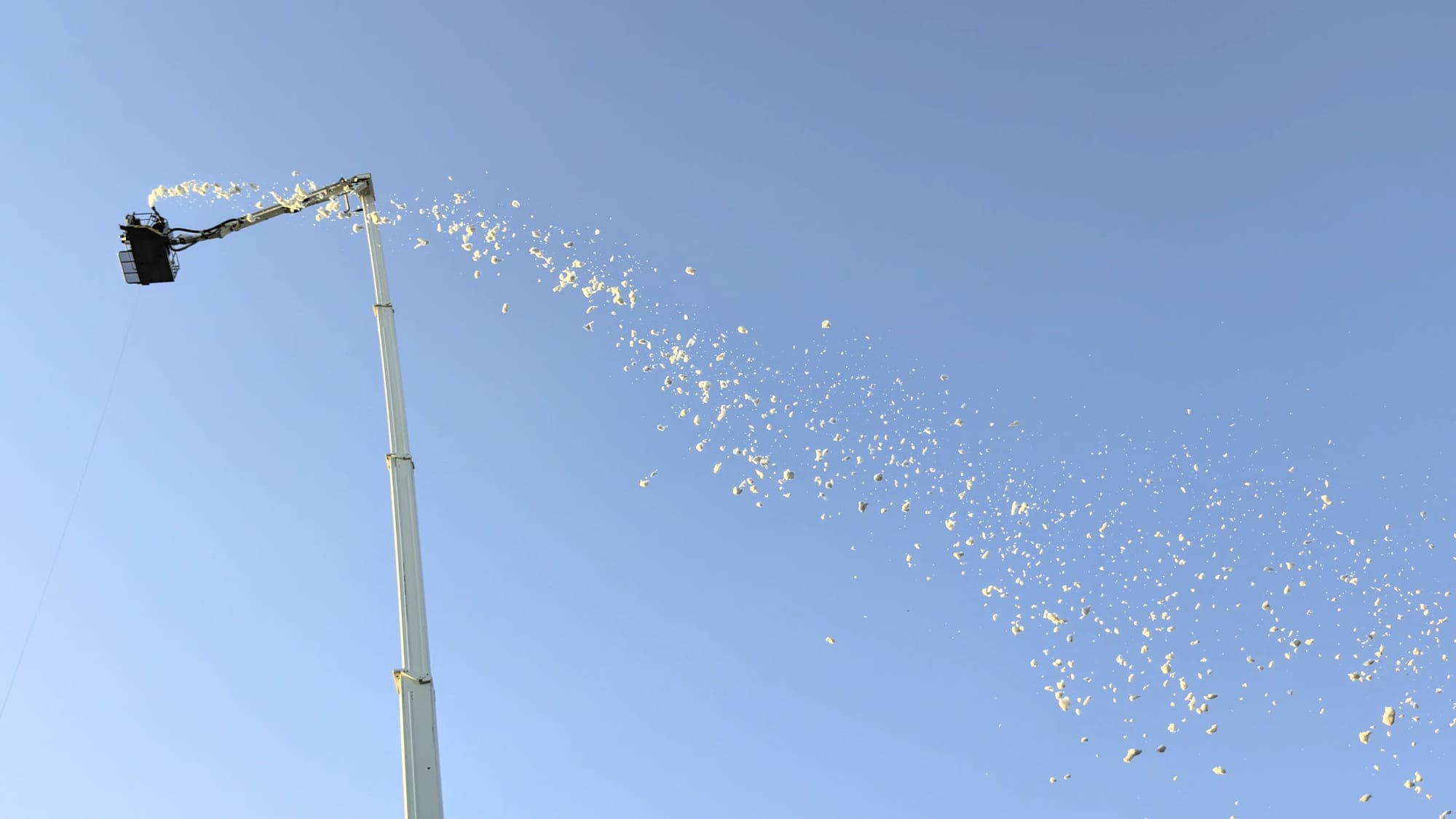
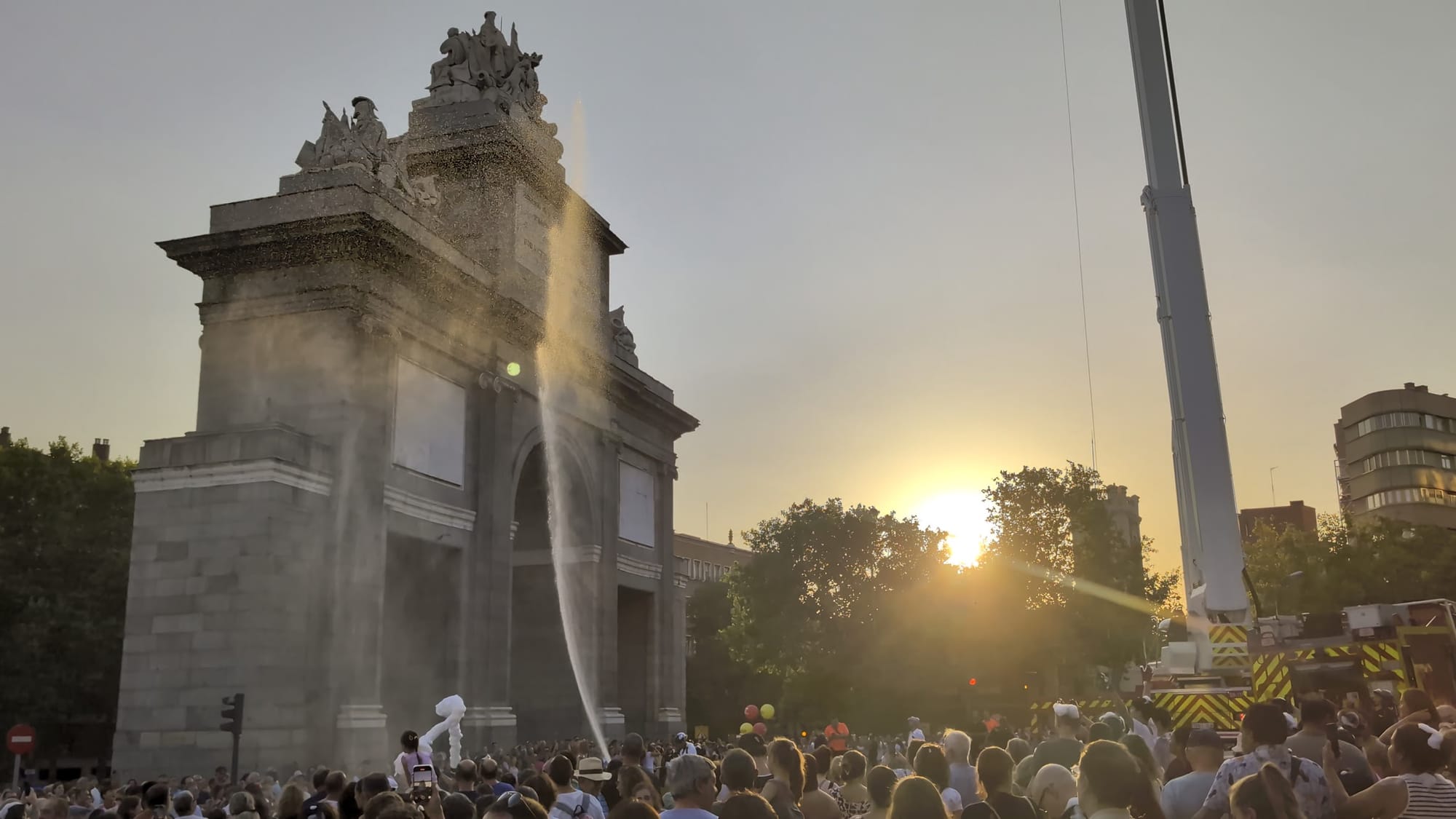
Firefighter pay tribute to the painting at the Puerta de Toledo.
As the painting winds through La Latina’s atmospheric streets, spectators shower the procession with petals from balconies.
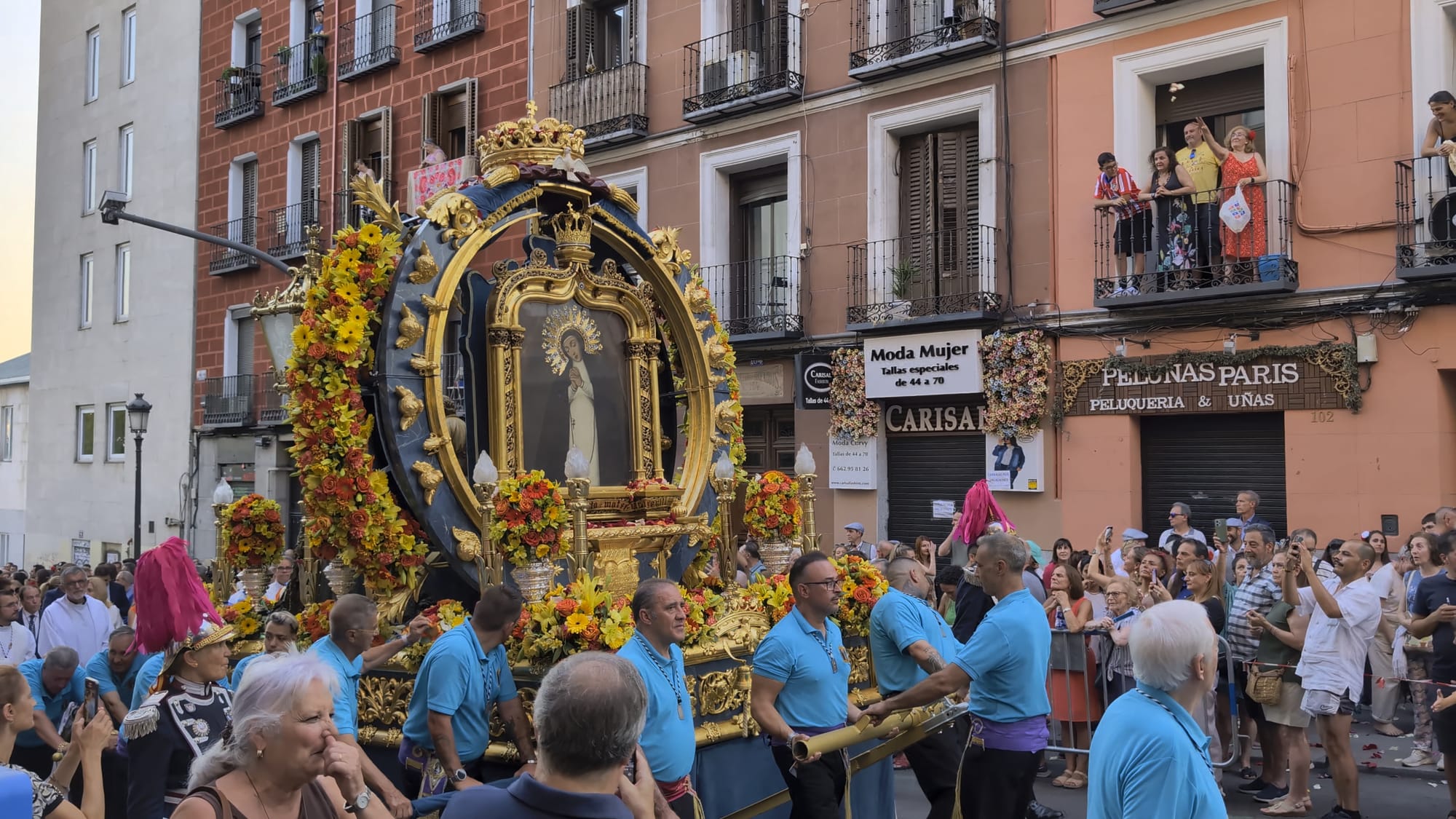
Dancing Until Dawn in La Latina
La Paloma is more than a religious event, it’s the grand finale of Madrid’s August verbenas, a series of three consecutive open-air street festivals.
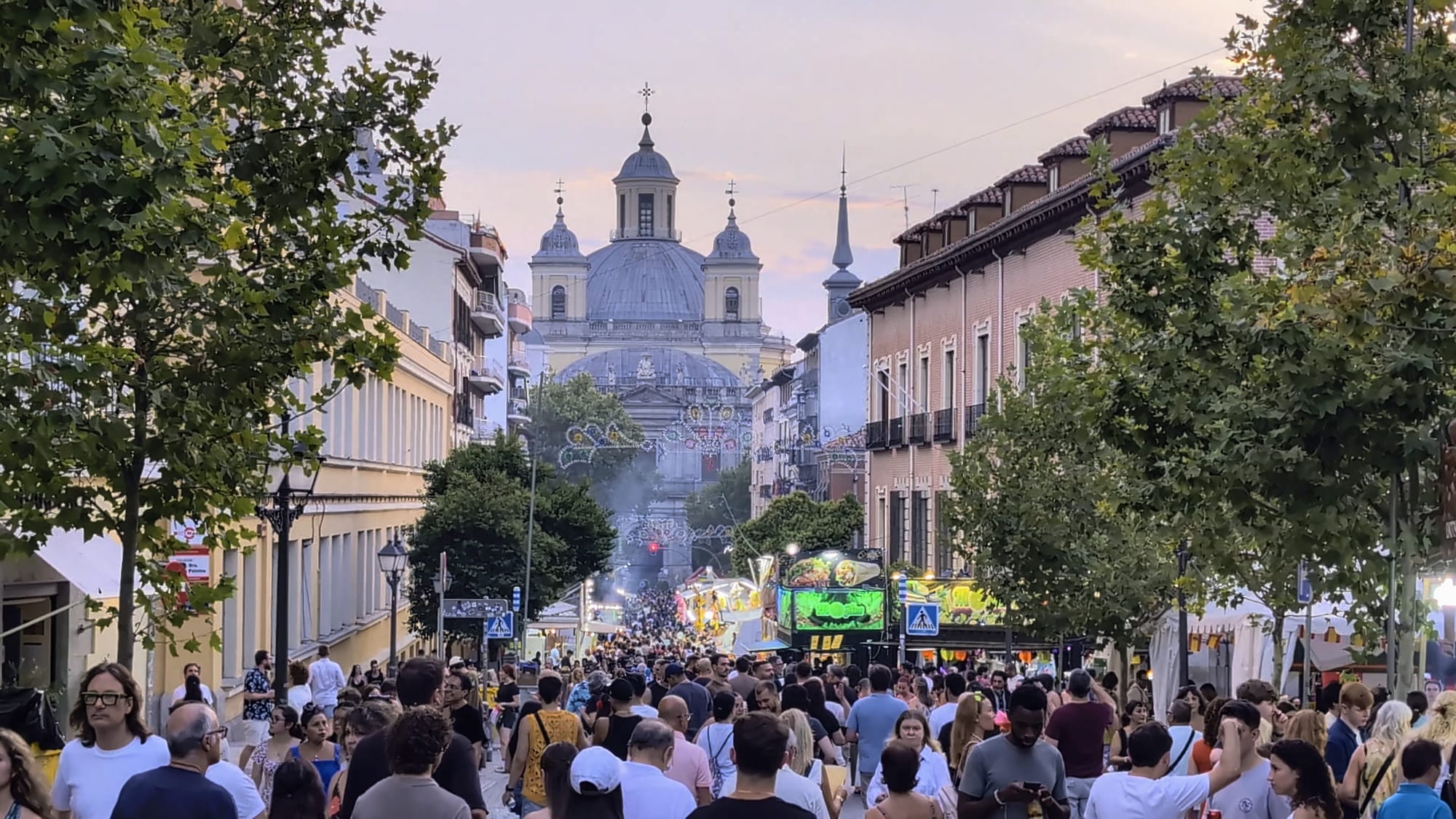
Balconies are draped with Mantones de Manila, embroidered silk shawls imported from the Philippines during Spain’s colonial era. Once a 19th-century status symbol, today they turn the neighborhood into a giant, shared living room, bright, beautiful, and proudly castizo.
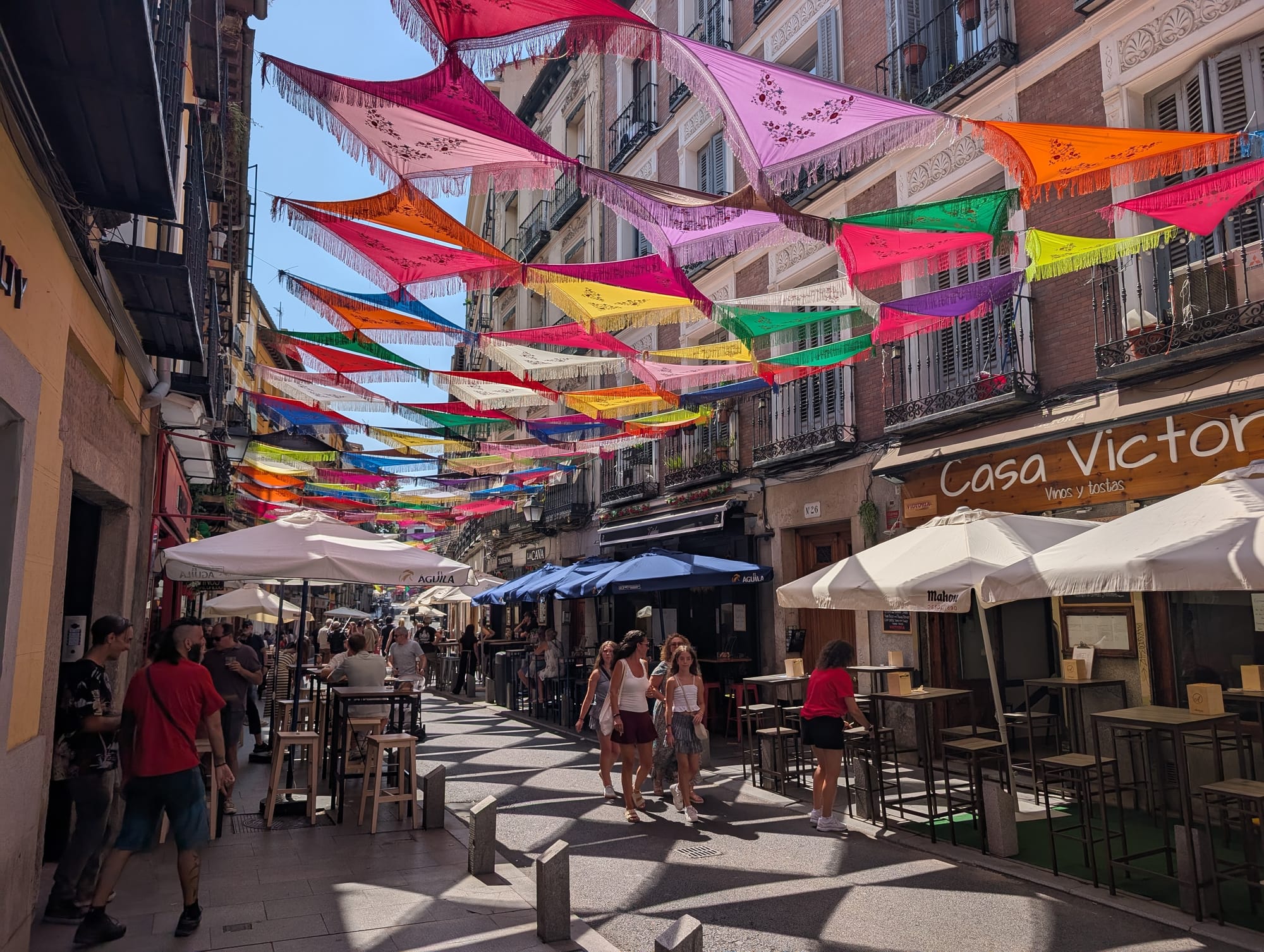
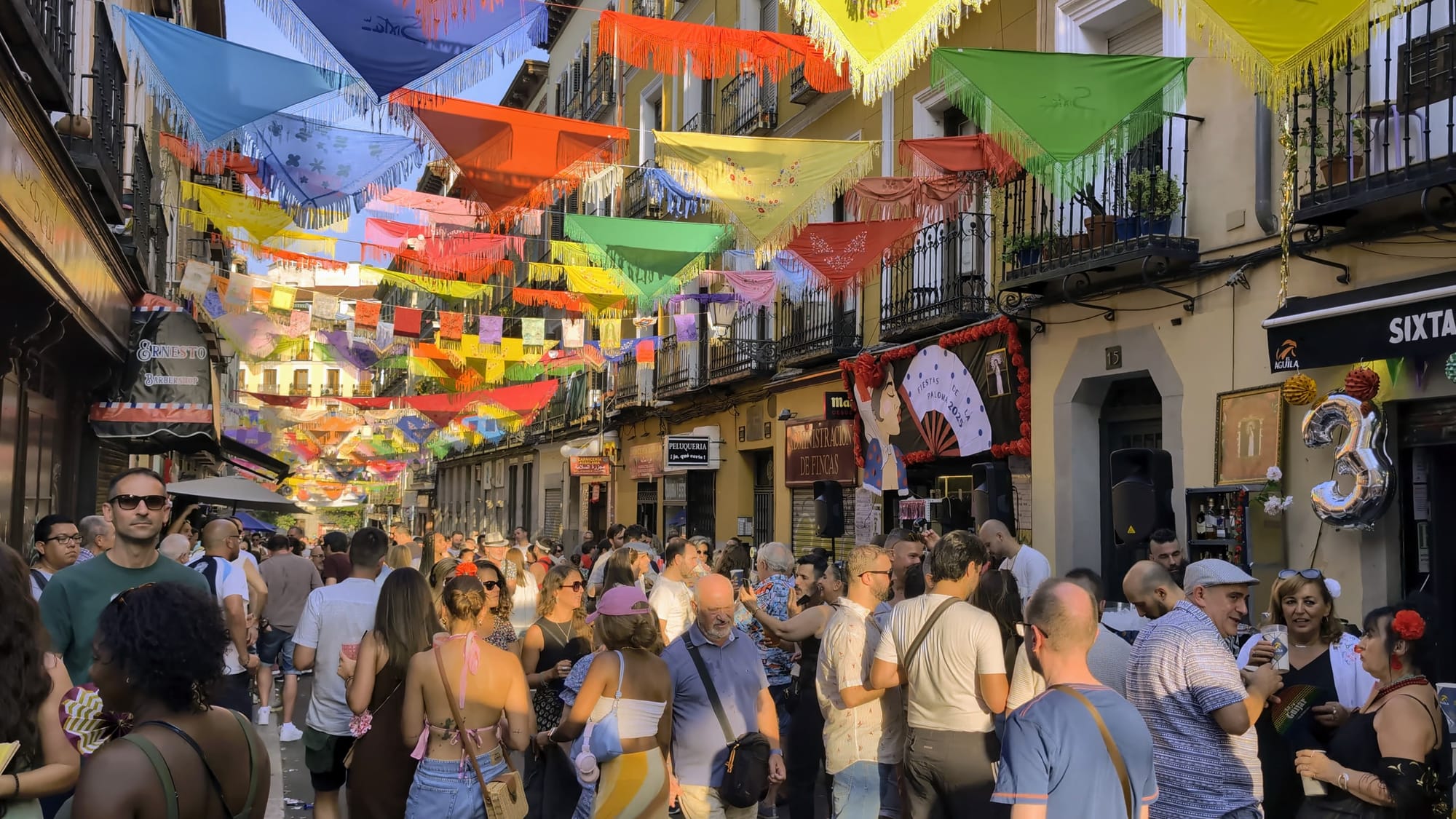
Mantones de Manila are hung from balconies throughout the La Latina neighborhood for the festival.
Streets overflow with music, dancing, and food. Locals and visitors dress as chulapos and chulapas, the quintessential Madrid look. You'll see the men in checkered caps and short jackets with red carnations in the lapel. Women wear fitted dresses with flounces, fringed shawls, and matching carnations in their hair.
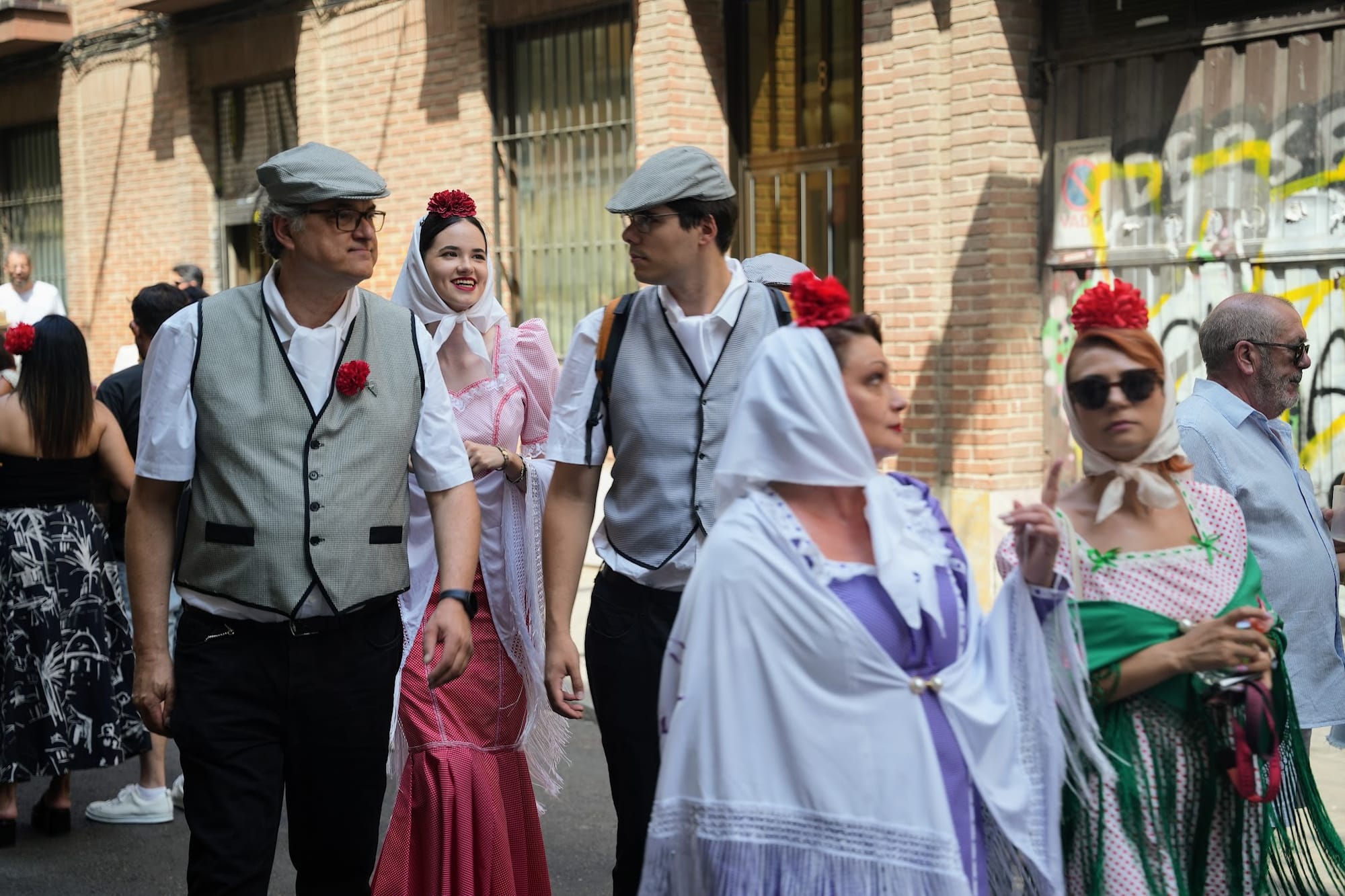
They dance the chotis, a slow, deliberate dance where one partner spins in place while the other circles around them. It’s often accompanied by accordion or bandoneón music, creating a sound uniquely tied to Madrid’s streets.
Dancing the Chotis in the streets at the La Paloma festival.
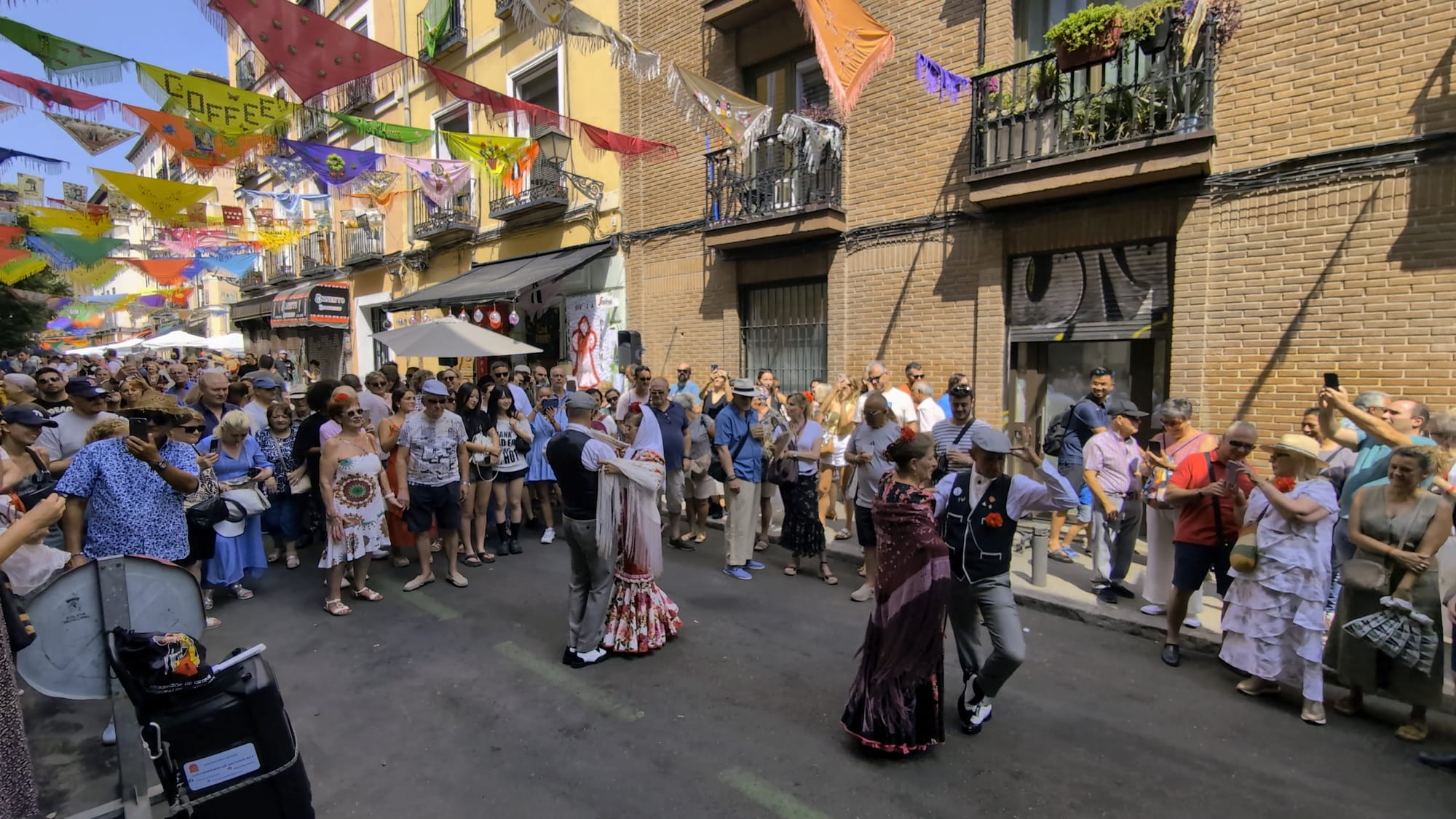
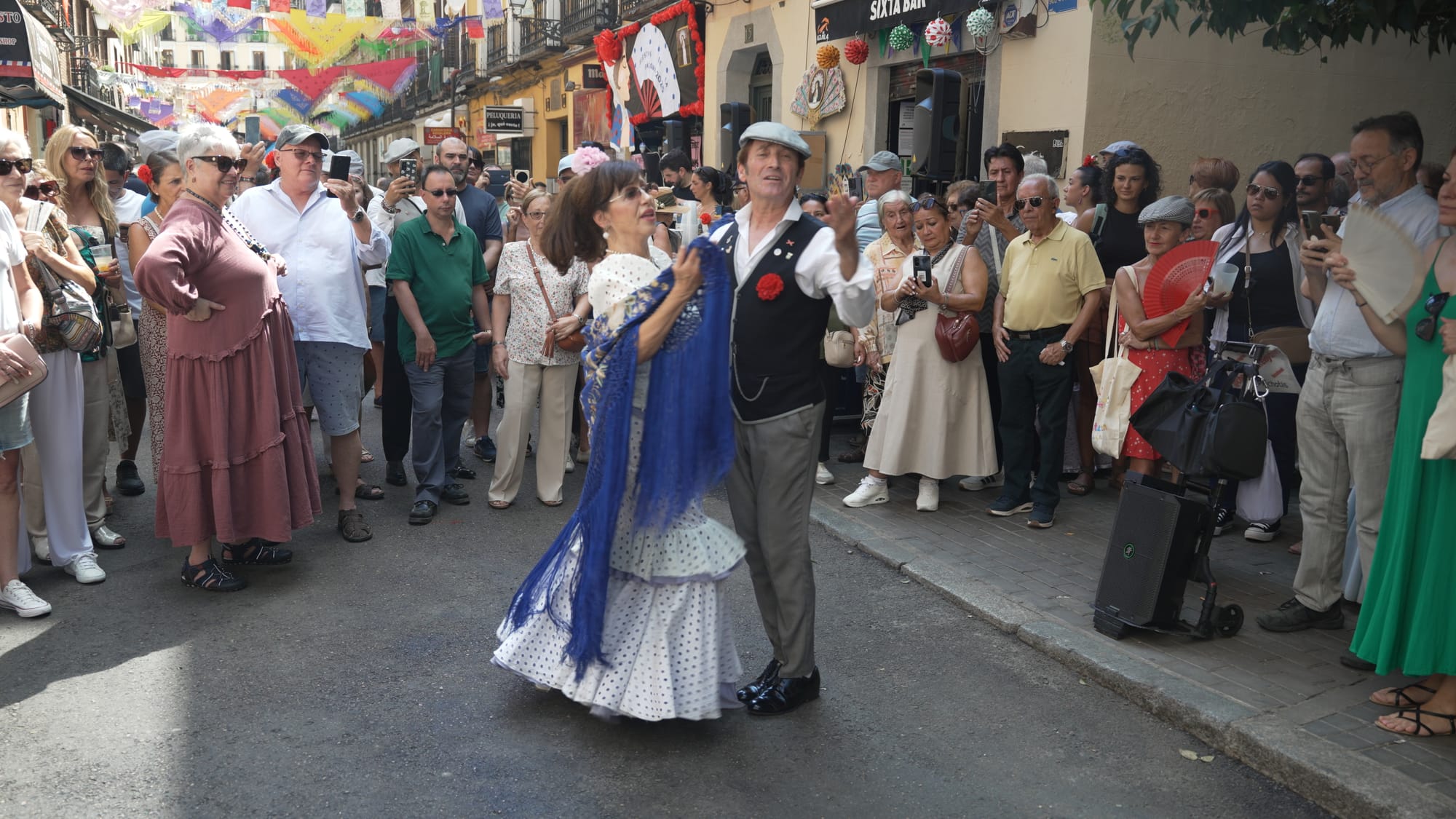
Dancing the chotis in the streets.
During the festival, locals compete in shawl contests, showcasing the most intricate embroidery, often with personal or family symbols. Other festival highlights include fan-painting competitions, and children learning the chotis.
At night, the soundtrack flips to DJs and pop concerts throughout the neighborhood that have crowds dancing until the early hours.
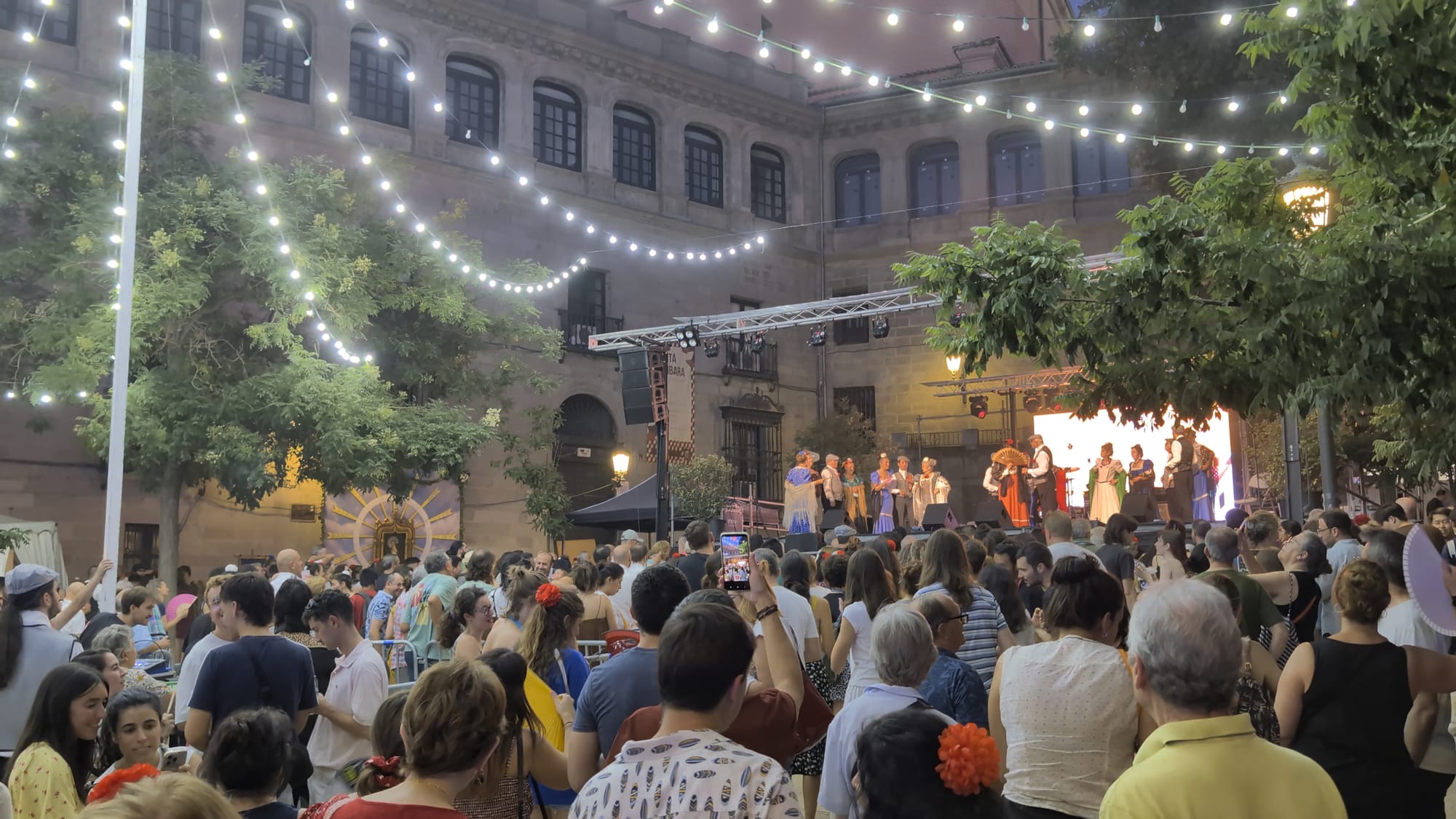
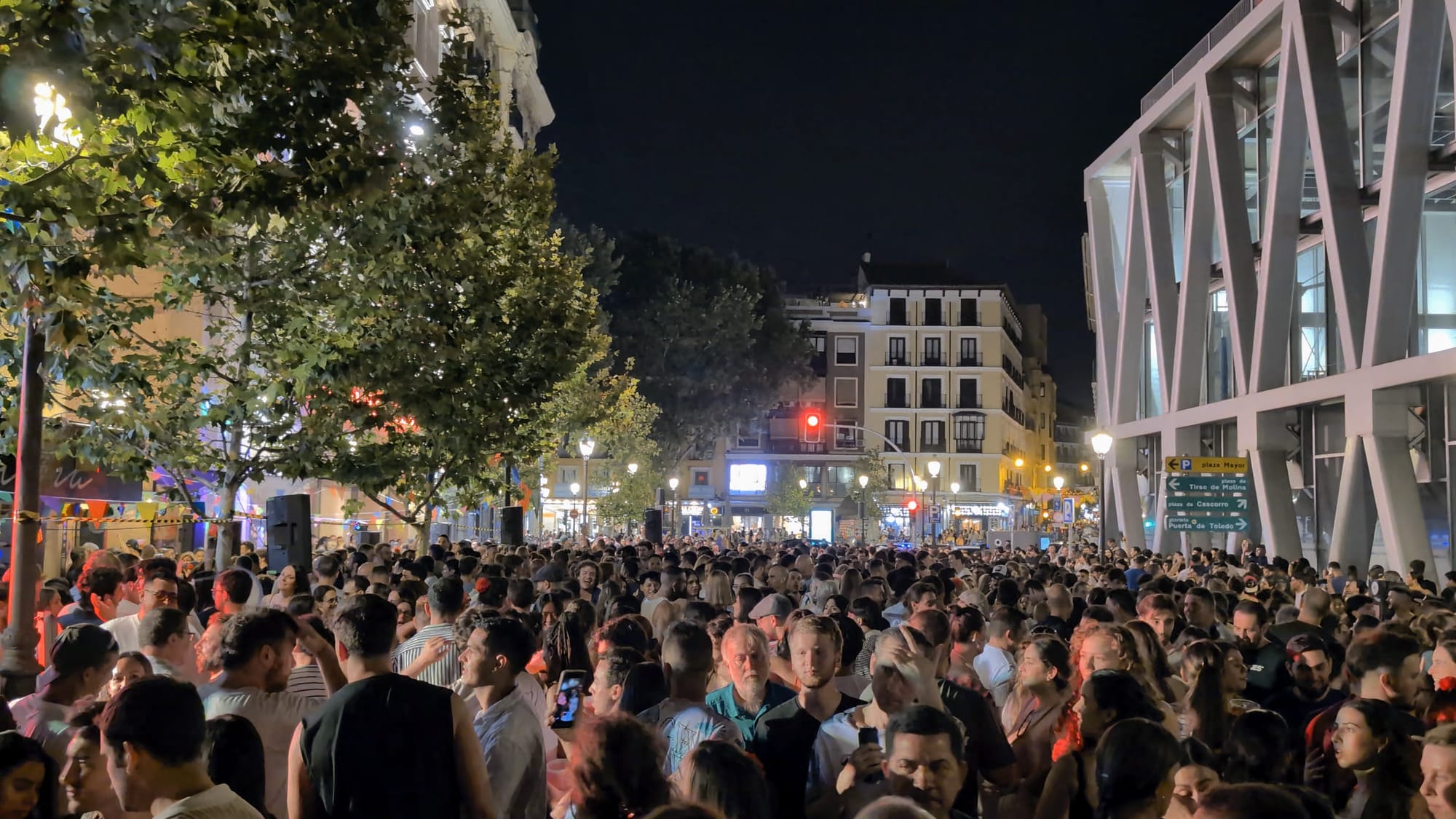
Along the way, people sip cañas, small glasses of fresh draft beer, from street bars, often paired with rosquillas, the traditional pastry that fuels a long night of celebration.
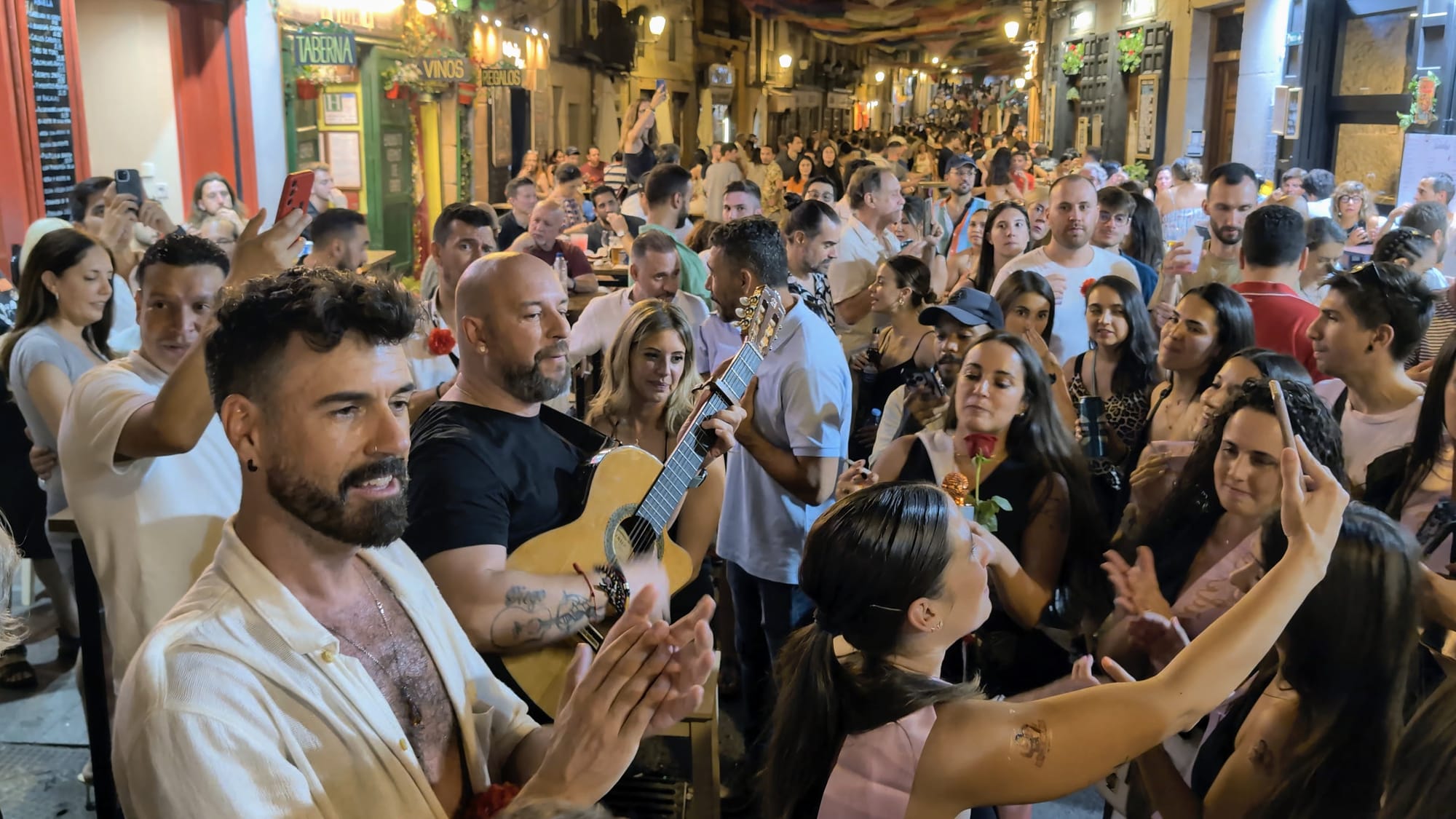
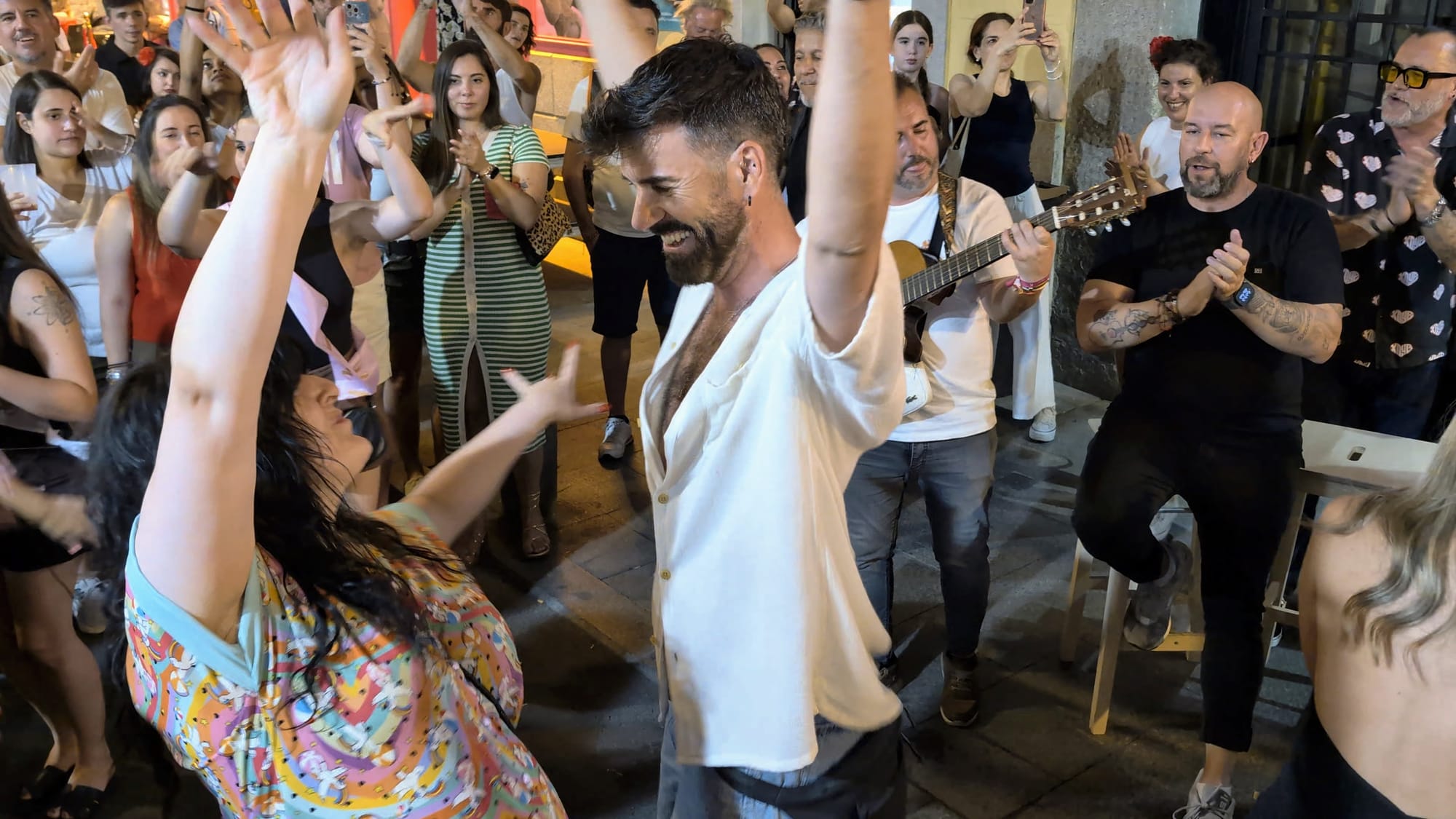
Music, dancing, food and spirits fill the streets late into the night.
A Tradition That Refuses to Fade
The Festival de la Paloma is not a spectacle for tourists, it’s Madrid at its most authentic. Its a celebration that began on a single street with a discarded painting, and grew over centuries into something bigger, a citywide tradition blending devotion, neighborhood pride, and pure joy.
When you see the embroidered shawls fluttering from balconies or couples dancing the smooth, steady chotis in the street, remember that you’re witnessing more a living tradition. You’re seeing Madrid’s heart, alive and beating, just as it has for more than two hundred years.
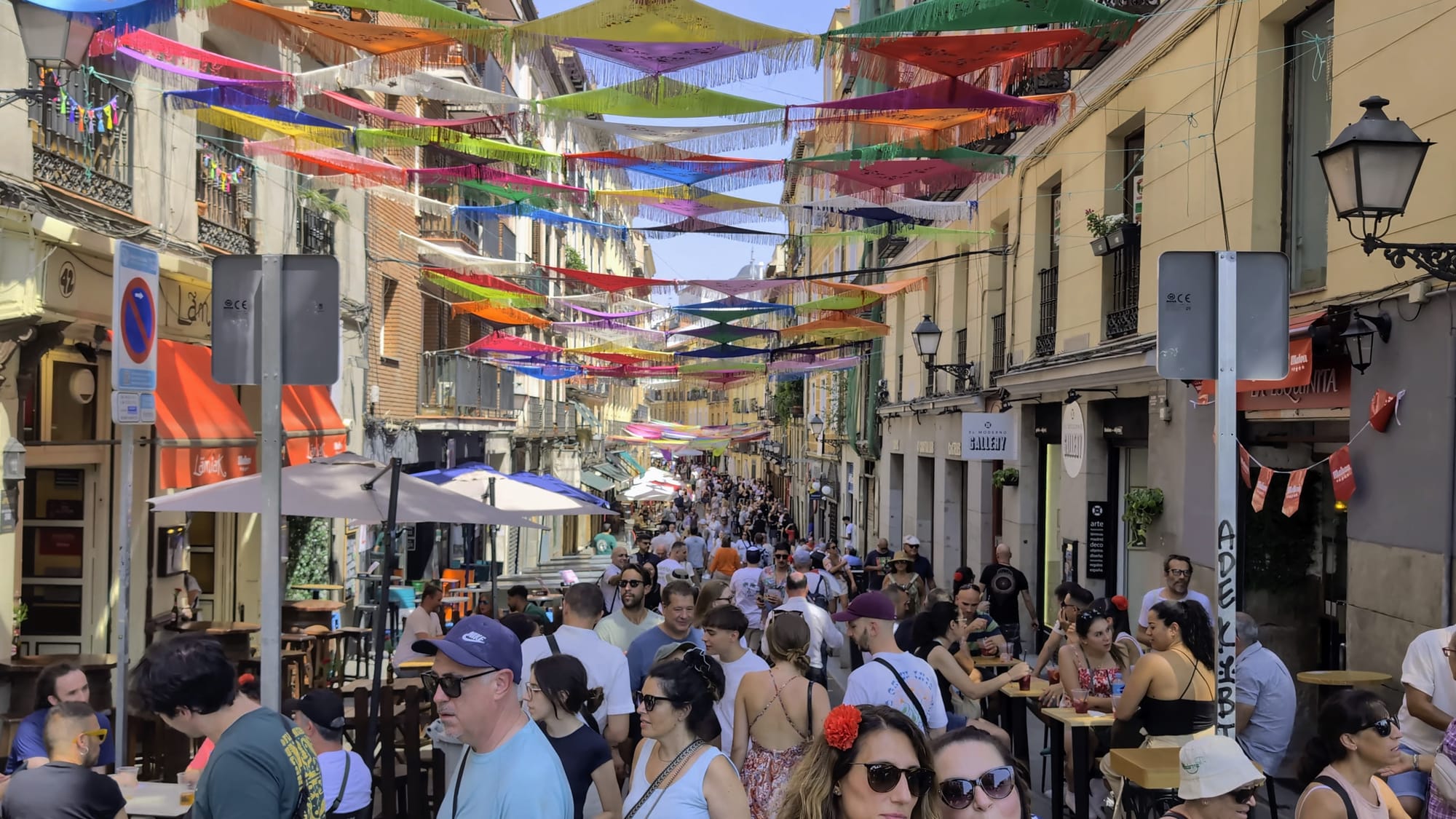


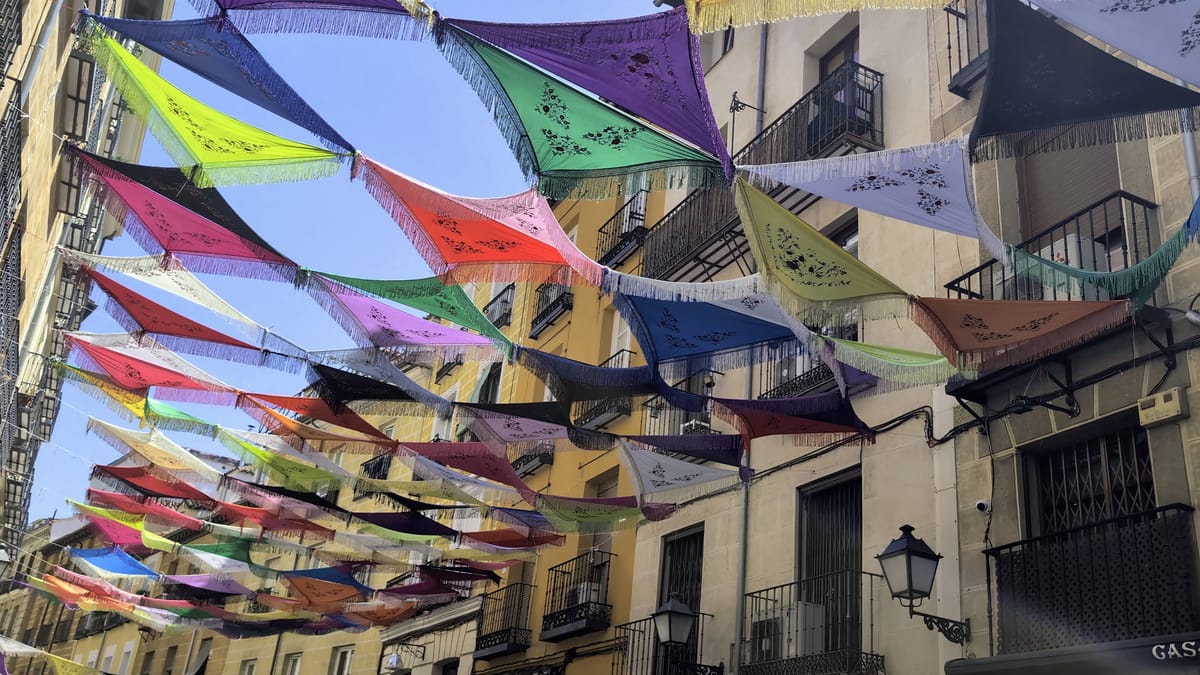
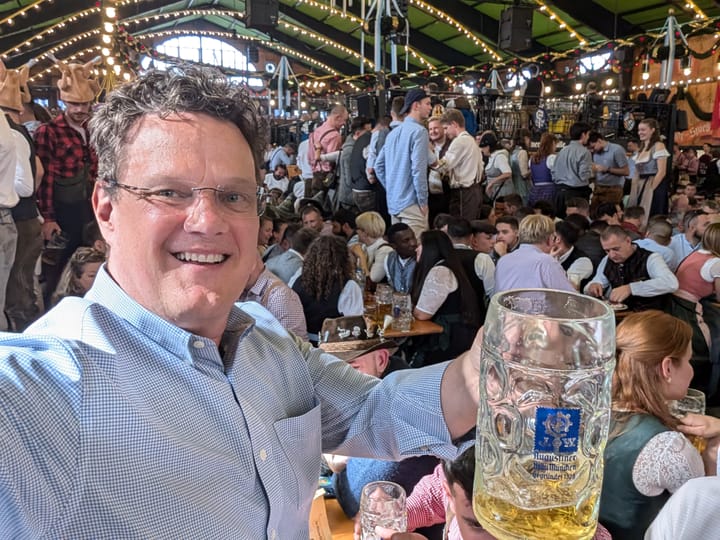

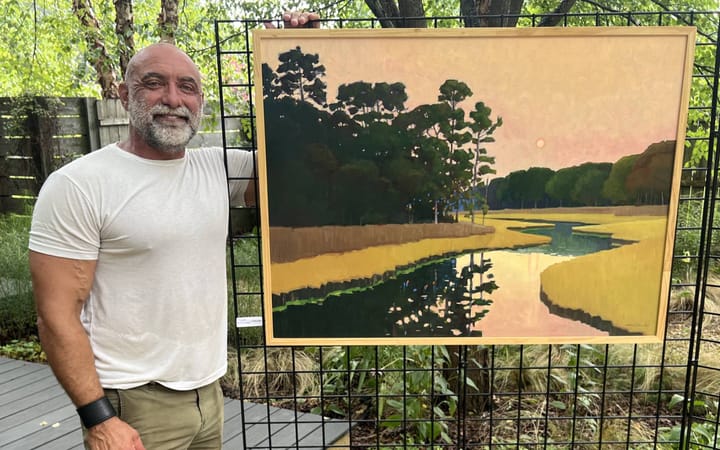
Comments ()